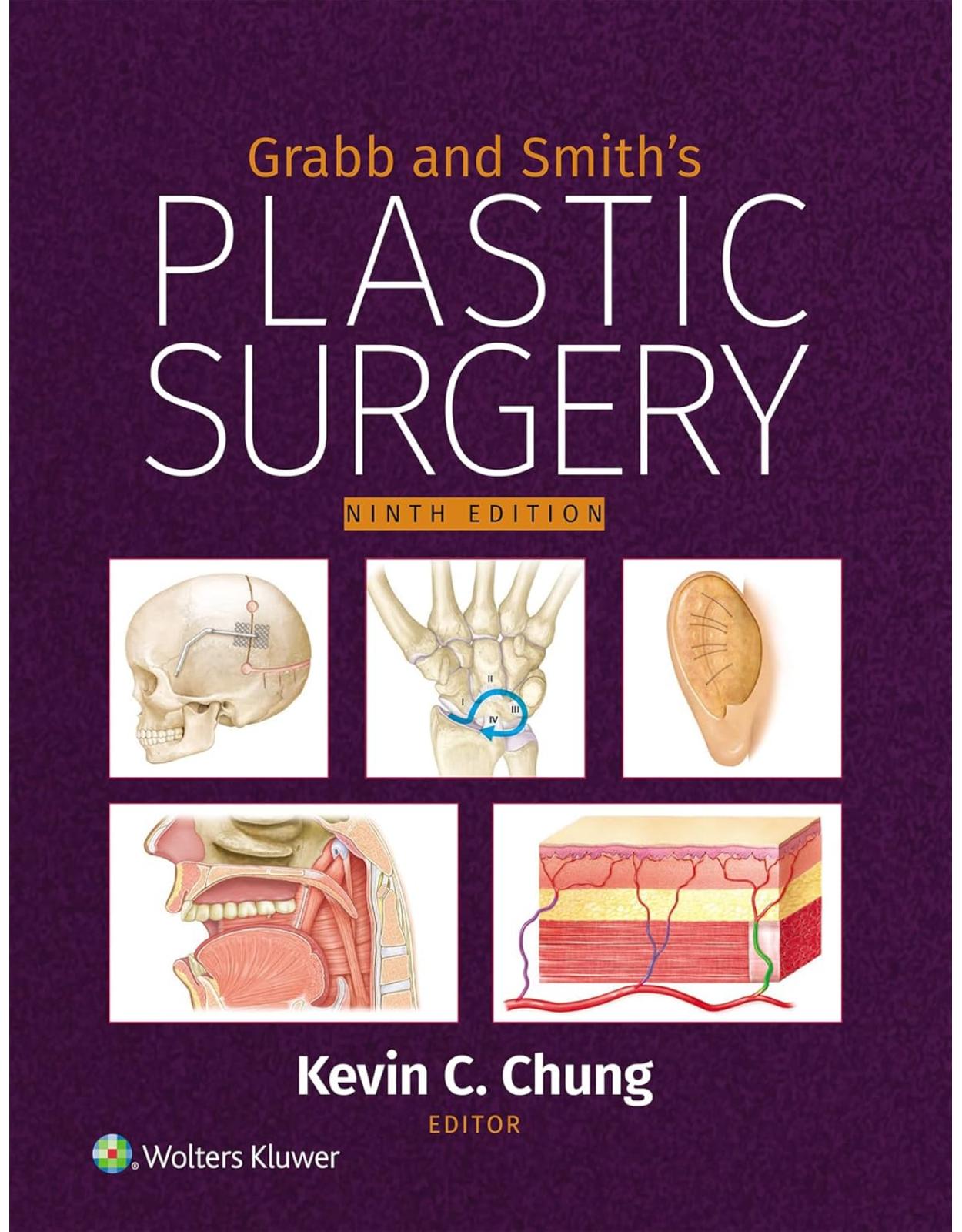
Grabb and Smith’s Plastic Surgery: Print + Digital with Multimedia
Livrare gratis la comenzi peste 500 RON. Pentru celelalte comenzi livrarea este 20 RON.
Disponibilitate: La comanda in aproximativ 4 saptamani
Autor: Kevin C Chung
Editura: LWW
Limba: Engleza
Nr. pagini: 1300
Coperta: Hardcover
Dimensiuni: 213 x 276 mm
An aparitie: 13/09/2024
Your instant access VST eBook comes with over 400 questions and answers from all chapters in the book to to reinforce learning, as well as 43 videos on topics including dermal and soft tissue fillers, C02 laser resurfacing of the hand dorsum for skin rejuvenation, surgical management of facial paralysis, and much more. The definitive text for medical students and residents in plastic surgery, Grabb and Smith’s Plastic Surgery, Ninth Edition, covers every aspect of this challenging field in up-to-date, easy-to-understand detail. Superb illustrations, convenient key points, and relevant review questions help you develop a deeper understanding of basic principles and prepare effectively for the In-Training Exam (ITE) and other certification exams. Dr. Kevin C. Chung leads a team of expert contributing authors to create a fully revised resource that also serves as a reference for practicing plastic surgeons to refresh knowledge and to enhance competency in various topics. Coverage includes all areas of plastic surgery: basic science, principles and techniques, skin and soft tissue topics, congenital anomalies and pediatric plastic surgery, head and neck surgery, aesthetic surgery, breast surgery, body contouring, hand surgery, and trunk and lower extremity surgery.
Table of Contents:
Part I: Principles, Techniques, and Basic Science
Chapter 1. Fundamental Principles of Plastic Surgery
General Principles
Understand the Patient’s Goals
Set Expectations
Take a Comprehensive History
Optimize Modifiable Patient Factors
Know When to Say “no”
Understand the Etiology of a Problem Before Embarking on Reconstruction
Choose the Best and Most Predictable Surgical Solution
Minimize Donor Site Morbidity
Replace Like With Like
Plan the Procedure Preoperatively
Think Ahead
Intraoperative Principles
Incise Precisely
Respect the Soft Tissue
Perform Adequate Debridement Before Reconstruction
Preserve Vascularity
Obliterate Dead Space
Obtain Hemostasis and Irrigate Before Closure
Optimize Scarring
Apply Dressings Meticulously
Control Pain
Final Thoughts
Be Honest About Complications
Refine Your Technique Continuously
Multiple Choice Question
Chapter 2. Basic Science of Wound Healing and Management of Chronic Wounds
Epidemiology and Significance of Wounds
Biology of Wound Healing
Scarless Wound Healing
Impaired Healing and Risk Factors
Nonhealing “Chronic” Wounds
Infections and Microbiome in Wound Healing
Principles of Management of Acute Wounds
Management of CW
Primary Prevention
Diagnosis, Assessment and Staging, and Longitudinal Monitoring
Nonsurgical Care of CW
Wound Bed Preparation and Debridement
Surgical Repair and Wound Coverage
Knowledge Gaps, Research, and Innovation in Wound Healing and Wound Care
Acknowledgments
Multiple Choice Question
Chapter 3. Management of Scars
Optimizing Postsurgical Scarring
Clinical Factors
Surgical Technique
Postoperative Management
Management of Poor Scarring (Hypertrophic Scars and Keloids)
Conservative Management
Surgical Management
Conclusions
Multiple Choice Question
Chapter 4. Principles of Flap Design and Application
History
Flap Nomenclature and Classification
Flap Content
Blood Supply
Method of Transfer and Movement
Manipulation
Flap Design and Choice
Evaluation of Defect
Flap Selection
Adjunctive Tools
Troubleshooting
Conclusion
Acknowledgment
Multiple Choice Question
Chapter 5. Principles of Microsurgery
Introduction
History
Applications of Microsurgery
Oncologic and Traumatic Reconstruction
Orthoplastic Surgery
Nerve Surgery
Lymphatic Surgery
Vascularized Composite Allotransplantation
Gender-Affirming Surgery
Preoperative Planning
Physical Exam
Patient Factors
Imaging
Technical Considerations
Positioning
Instrumentation and Suture
Magnification
Robotic Microsurgery
Microsurgical Techniques
Anesthesia
Ischemia Time
Anastomosis
Interposition Grafts
Flap Inset/Securing
Postoperative Management
Monitoring
Anticoagulation
Flap Take Back
Direct Thrombectomy
Thrombolysis
Leeches
Flap Failure
Conclusion
Multiple Choice Question
Chapter 6. Concepts of Skin Grafts and Skin Substitutes
Introduction
Definitions
Historical Perspectives
Fundamentals of Skin Graft Biology
Indications
The Wound Bed
The Skin Graft
The Patient
The Timing
Techniques
Wound Bed Preparation
Graft Harvest
To Mesh or Not to Mesh
Graft Insetting
Dressings
Modifications to Expand Indications
Outcomes
Skin Substitutes
Multiple Choice Question
Chapter 7. Principles of Flap Reconstruction: Muscle Flaps, Myocutaneous Flaps, and Fasciocutaneous Flaps
Introduction
Preoperative Assessment
Delay Phenomenon
Muscle Flaps
Classification System
Myocutaneous Flaps
Fasciocutaneous and Perforator Flaps
Local Tissue Rearrangement
Chimeric Flaps
Freestyle Flaps
Supermicrosurgery
Clinical Examples
Pectoralis Major Muscle Flap
Rectus Abdominis, Deep Inferior Epigastric, and Superficial Inferior Epigastric Flaps
Latissimus Dorsi Muscle and Thoracodorsal Artery Perforator Flaps
Radial Forearm Flap
Gracilis and Profunda Artery Perforator Flaps
Anterolateral Thigh Flap
Conclusions
Multiple Choice Question
Chapter 8. Principles of Nerve Repair and Reconstruction and Neuroma Management
Principles of Nerve Injury
Biology of Nerve Injury
Diagnostic Workup for Nerve Injury, Nerve Compression, and Neuroma
High-Frequency Ultrasound Imaging and Magnetic Resonance Neurography
Electrodiagnostic Studies
Diagnostic Nerve Blocks
Timing of Nerve Reconstruction for Functional Deficits and Neuropathic Pain
Nerve Reconstruction
Primary Nerve Repair
Nerve Repair With Conduits
Nerve Repair With Autograft and Allograft
Nerve Transfers and Functional Muscle Transfers
Treatment of Neuropathic Pain
Perioperative Care
Acknowledgments
Multiple Choice Question
Chapter 9. Management of Neuroma Pain
Introduction
Evaluation and Diagnosis
Principles of Symptomatic Neuroma Management
Nonsurgical Management
Surgical Management Principles
Surgical Techniques
Nerve Reconstruction—Distal End Available
Nerve Reconstruction—Distal End Unavailable
Symptomatic Neuroma Prevention
Conclusion
Video Legends
Multiple Choice Question
Chapter 10. Principles of Tissue Expansion
Introduction
History
Physiology
Types of Tissue Expanders
Integrated Versus Remote Port
Expander Fill
Smooth Versus Textured Expanders
Tissue Expander Shape
Internal Versus External Expansion
Principles Regarding Expander Placement
Principles of Expansion Process
Complications
Use of Tissue Expanders
Head and Neck
Trunk
Breast
Extremities
Congenital
Pre-expansion
Conclusion and Future Directions
Multiple Choice Question
Chapter 11. Principles of Local and Regional Anesthesia and Procedural Sedation
Local Anesthesia
Mechanism of Action
Pharmacokinetics
Duration of Action
Toxicity
Dosing
Tumescent Anesthesia
Allergies
Treatment of Local Anesthesia Toxicities
Liposomal Bupivacaine
Minor Nerve Blocks
Facial Blocks
Hand Blocks
Regional Blocks
TAP Block
Paravertebral and Pectoralis Nerve Blocks
Upper Extremity Regional Anesthesia
Procedural Sedation
Multiple Choice Question
Chapter 12. Concepts of Tissue Engineering
Biomaterials
Cell Sources
Morphogenic Instruction
Manufacturing
Examples
Skin
Breast
Nerve
Bone
Cartilage
Challenges and Future Directions
Conclusion
Multiple Choice Question
Chapter 13. Patient Safety in Plastic Surgery
Introduction
Preoperative Assessment
Cardiac Risk Assessment
The American Society of Anesthesiologists Classification
Modifiable Patient Risk Factors
Psychiatric Conditions and Disorders
Venous Thromboembolism
Pathophysiology
VTE Prophylaxis
Risk Assessment
Hormonal Therapy
Perioperative Travel
Pain Management
Opioid Stewardship
Multimodal Pain Control Regimens
Antibiotic Stewardship
Intraoperative Safety
Operative Positioning
Concurrent and Overlapping Surgery
Infection Prevention
Preventing Human Error
Cognitive Aids
Communication
Physician Fatigue
Culture of Safety
Psychological Safety
Diversity, Equity, and Inclusion
Physician Burnout and Wellness
Conclusion
Multiple Choice Question
Chapter 14. Ethics of Plastic Surgery
Introduction
Definitions
Ethical Principles
Informed Consent
Conflicts of Interest
Disclosure of Relationships
Ethics and Evidence-Based Medicine
Ethical Issues at the Intersection of Plastic Surgery and the Larger Medical System
Transplantation Medicine
Gender-Affirming Care
Cosmetic Surgery
Medicalization and Pathologizing
Labiaplasty as a Case Example
Social Media
Innovation
Conclusion
Multiple Choice Question
Chapter 15. Principles of Research Designs and Outcomes Research
Introduction
A Case-Based Overview
Describe the Inequity
Understand Mediating Factors and Outcomes
Find Interventions That Work
Developing the Clinical Problem Into a Strong Research Question
Vetting With “So What?”
Develop Impact Statements
Consider Feasibility
Refining the Question
Selecting the Best Design
Qualitative Methods
Quantitative Methods
Selecting the Method
Analytic Plan
Population
Data Source
Considering Limitations and Bias
Taking the So What? To Now What?
Multiple Choice Question
Chapter 16. Basic Statistics for the Practicing Physician
Introduction
Types of Data
Summary Measures
Measures of Central Tendency
Measures of Dispersion
Data Distributions
What Is the Best Way to Display Data?
Measures of Effect
How Is the Magnitude of an Effect Expressed?
Risk Difference, Relative Risk, and Odds Ratio
Standardized Mean Difference
Interaction Effects and Prognostic Factors
Confounding, Bias, and Imprecision
Confounding
Bias
Imprecision
Inferential Statistics
Hypothesis Testing and the P-value
False Positive (Type I Error)
False Negative (Type II Error) and Power
Confidence Intervals
P-Values or Confidence Intervals?
Which Test Should We Use?
Parametric Tests
Nonparametric Tests
Fisher and Chi-Square Tests
Correlation Analysis
Regression Analysis
Diagnostic Test Performance
Meta-Analysis
Heterogeneity
Acknowledgments
Multiple Choice Question
Part II: Skin and Soft Tissue
Chapter 17. Benign and Malignant Dermatologic Conditions
Embryology
Anatomy
Common Benign Cutaneous Tumors
Seborrheic Keratosis
Sebaceous Hyperplasia
Dermatofibroma
Pyogenic Granuloma
Cherry Angioma
Acrochordon (Skin Tag)
Keratoacanthoma
Pilomatrixoma
Nevus Sebaceous
Nonmelanoma Skin Cancers
Basal Cell Carcinoma
Squamous Cell Carcinoma
Melanoma
Merkel Cell Carcinoma
Dermatofibrosarcoma Protuberans
Multiple Choice Question
Chapter 18. Thermal, Chemical, and Electrical Injuries
Thermal, Chemical, and Electrical Injuries
Epidemiology
Pathophysiology
Histology
Assessment and Management
Management
Cold Thermal Injuries
Chemical Burns
Electrical Burns
Multiple Choice Question
Chapter 19. Principles of Burn Reconstruction
Introduction
Pathophysiology
Local Response
Systemic Response and Hypermetabolism
Initial Management of the Patient
The Burn Team
Triage of the Burn Patient
Assessing Burn Size
Assessment of Depth
Resuscitation
Analgesia, Sedation, and Itching
Cleaning and Dressing With Topical Wound Agents
Escharotomy
Inhalation Injury
Nutrition
Physiotherapy and Occupation Injury
Mediation of Hypermetabolism
Surgical Management of Burns
Immediate Total Excision
Early Total Excision
Early Staged Burn Excision
Covering Massive Burn Wounds
Special Anatomic Considerations
Face
Neck
Hands
Lower Extremities
Perineum
Infection
Pediatric Burns
Other Burns
Chemical Burns
Electric Burns
Cold-Induced Injury
Multiple Choice Question
Chapter 20. Radiation and Radiation Injury
Introduction
Pathophysiology
Oncoplastic Breast Reconstruction
Mastectomy Reconstruction
Breast Cancer–Related Lymphedema
Head and Neck Reconstruction
Sarcoma Reconstruction
Radiation Treatment
Summary
Multiple Choice Question
Chapter 21. Lasers in Plastic Surgery
Laser History
The Science and Physics of Lasers
Chromophores of the Skin
Hemoglobin
Melanin
Water
Depth of Penetration of Various Lasers
Laser Use in Clinical Plastic Surgery
Vascular Lesions
Hair Removal
Skin Resurfacing
Scar Management
Tattoos
Clinical Considerations: Primarily for Skin Resurfacing
Patient Evaluation
Pretreatment
Intraoperative Key Points
Postoperative
Risks and Complications
Laser Safety
Laser Business Considerations
Multiple Choice Question
Part III: Congenital Anomalies and Pediatric Plastic Surgery
Chapter 22. Cleft Lip and Palate: Principles and Treatment
Anatomy
Lip and Nasal Anatomy
Palatal Anatomy
Phenotypic Spectrum and Classification
Spectrum of Cleft Lip and Cleft Palate
Classification of Cleft Lip and Palate
Epidemiology
Multidisciplinary and Early Care
Presurgical Infant Orthopedics
Goals
Nasoalveolar Molding
Lip Taping and DynaCleft
Latham-Type Appliances
Primary Unilateral Cleft Lip Repair
Goals of Unilateral Cleft Lip Repair
Timing and Staging of Unilateral Lip Repair
Unilateral Cleft Lip Repair Techniques
Primary Bilateral Cleft Lip Repair
Goals of Bilateral Cleft Lip Repair
Timing and Staging of Bilateral Cleft Lip Repair
Bilateral Cleft Lip Repair Techniques
Primary Cleft Palate Repair
Goals of Palate Repair
Timing of Palate Repair
Hard Palate Repair
Soft Palate Repair
Intravelar Veloplasty
Tissue Augmentation
Secondary Procedures
Speech
Alveolar Cleft Repair
Orthodontic and Orthognathic Treatment
Nasolabial Revisions
Secondary and Formal Cleft Rhinoplasty
Conclusion
Multiple Choice Question
Chapter 23. Cleft Lip and Palate: Embryology and Genetics
Introduction
Embryology of the Craniofacial Complex
Craniofacial Development Begins With the Cranial Neural Crest Cells
From Pharyngeal Arches to Facial Prominences
Development of the Palate
Orofacial Clefts and Associated Syndromes
Primary Palate Cleft
Secondary Palate Cleft
Etiology of Orofacial Clefts
Cellular and Molecular Mechanisms Involved in Palate Development
How the PBX-WNT-P63-IRF6 Pathway Influences Orofacial Patterning
Keeping the Balance Between Apoptosis and Proliferation—FGF, BMP, TGF-ß, SHH
Periderm—The Key to Normal Orofacial Development
Advances Driving Medicine
The Era of Functional Genomics and Multiomics
Multiple Choice Question
Chapter 24. Congenital Melanocytic Nevi and Other Common Skin Lesions
Anatomy of the Skin
Congenital Melanocytic Nevi
Risk of Melanoma
Neurocutaneous Melanosis
Surgical Management of CMN
Nevus of Ota and Ito
Spitz Nevus
Halo Nevus
Dysplastic Nevi
Epidermal Nevi
Nevus Sebaceous
Cysts
Epidermal Inclusion Cysts
Pilomatrixoma
Dermoid Cysts
Multiple Choice Question
Chapter 25. Vascular Anomalies
Introduction
Tumors
Infantile Hemangioma
Congenital Hemangioma
Kaposiform Hemangioendothelioma
Pyogenic Granuloma
Malformations
Capillary Malformation
Lymphatic Malformation
Venous Malformation
Arteriovenous Malformation
Conclusions
Multiple Choice Question
Chapter 26. Nonsyndromic Craniosynostosis and Deformational Plagiocephaly
Nonsyndromic Craniosynostosis
Introduction
Cranial Development, Anatomy, and Pathoanatomy
Classification
Diagnosis
Functional Aspects
Treatment
Clinical Findings and Management of Specific Types of Craniosynostosis
Complications
Deformational Plagiocephaly, Brachycephaly, and Scaphocephaly
Introduction
Diagnosis and Terminology
Etiology
Assessment
Prevention and Treatment
Multiple Choice Question
Chapter 27. Syndromic Craniosynostosis
Introduction
Patient Evaluation
Genetic Considerations
Selected Syndromes
Apert Syndrome
Crouzon Syndrome
Pfeiffer Syndrome
Saethre-Chotzen Syndrome
Muenke Syndrome
Carpenter Syndrome
Jackson-Weiss Syndrome
Craniofrontonasal Dysplasia
ERF-Related Craniosynostosis
TCF12-Related Craniosynostosis
Surgical Management
Surgical Indications
Selected Procedures
Surgical Sequencing
Psychosocial Management
Conclusion
Multiple Choice Question
Chapter 28. Craniofacial Microsomia and Principles of Craniofacial Distraction
Craniofacial Microsomia
Epidemiology
Pathophysiology
Clinical Presentation
Classification Schemes
Evaluation and Workup
Imaging and Testing
Management and Treatment
Craniofacial Distraction
Principles of DO
Hardware
Mandibular Distraction
Midface Distraction
Cranial Vault Distraction
Complications
Multiple Choice Question
Chapter 29. Orthognathic Surgery
Orthognathic Surgery: Definition and Goals
Presurgical Orthodontic Requirements
Postoperative Care
Adult and Pediatric Dental Primer
Common Dental Terms
Diagnosing Common Dentofacial Deformities
History
Physical Exam: The Facial Examination
Cephalometrics
Collaborating With Your Orthodontist
Surgical Planning
Dental Model Surgery
Virtually Planned Orthognathic Surgery
Routine Orthognathic Procedures
Le Fort I Maxillary Osteotomy
Surgically Assisted Rapid Palatal Expansion
Mandibular Sagittal Split Osteotomy
Vertical Ramus Osteotomy
Genioplasty
Intraoperative Complications
Bleeding
Open Bite
Bad Splits
Fractured Occlusal Splint
Nerve Transection
Tooth and Gingival Damage
Dislodged Orthodontic Appliances
Postoperative Complications
Infection
Persistent Malocclusion
Malunion and Nonunion
Conclusion
Multiple Choice Question
Chapter 30. Craniofacial Clefts and Orbital Hypertelorism
Cleft 0 and 14
Median Craniofacial Hypoplasia
Median Craniofacial Dysraphia
Median Craniofacial Hyperplasia
Cleft Number 1
Soft Tissue
Skeletal
Cleft Number 2
Soft Tissue
Skeletal
Cleft Number 3
Soft Tissue
Skeletal
Cleft Number 4
Soft Tissue
Skeletal
Cleft Number 5
Soft Tissue
Skeletal
Cleft Number 6
Soft Tissue
Skeletal
Cleft Number 7
Soft Tissue
Skeletal
Cleft Number 8
Soft Tissue
Skeletal
Cleft Number 9
Soft Tissue
Skeletal
Cleft Number 10
Soft Tissue
Skeletal
Cleft Number 11
Soft Tissue
Skeletal
Cleft Number 12
Soft Tissue
Skeletal
Cleft Number 13
Soft Tissue
Skeletal
Cleft Number 14
Soft Tissue
Skeletal
Cleft Number 30
Soft Tissue
Skeletal
Cleft Numbers 31 to 33
Hypertelorism
Surgical Considerations
Multiple Choice Question
Chapter 31. Ear Reconstruction
Epidemiology and Embryology
Anatomy and Orientation
Congenital Ear Malformations and Deformations
Patterns of Deformation
Microtia
Autologous Costal Cartilage Reconstruction
Subfascial Tissue Expansion and Expanded Two-Flap Reconstruction
Porous High-Density Polyethylene Reconstruction
Prosthetic Reconstruction
Comparative Outcomes, Technical Considerations, and Complications
Technical Considerations in Comorbid Conditions
Craniofacial Microsomia
Treacher Collins Syndrome
Trauma
Burns
Partial Auricle Defects
Atresia Repair
Conclusions
Multiple Choice Question
Chapter 32. Management of Velopharyngeal Dysfunction
Velopharyngeal Apparatus
Anatomy
Physiology
Pathophysiology
Diagnosis
History and Physical Examination
Perceptual Speech Evaluation
Speech Videofluoroscopy
Nasopharyngoscopy
Nasometry
Magnetic Resonance Imaging
Management
Nonsurgical Management
Surgical Management
Special Considerations
Chromosomal Deletion Syndromes
Submucous Cleft Palate
Tonsillectomy and Adenoidectomy
VPD and Orthognathic Surgery
Conclusion
Multiple Choice Question
Chapter 33. Craniofacial Tumors and Conditions
Fibrous Dysplasia
Etiology and Pathogenesis
Diagnosis
Treatment
Parry-Romberg Syndrome
Etiology and Pathogenesis
Treatment
Treacher Collins Syndrome
Etiology and Pathogenesis
Treatment
Neurofibromatosis
Etiology and Pathogenesis
Treatment
Robin Sequence
Etiology and Pathogenesis
Treatment
Moebius Syndrome
Etiology and Pathogenesis
Treatment
Dermoid Cyst
Etiology and Pathogenesis
Treatment
Multiple Choice Question
Chapter 34. Pediatric Brachial Plexus Reconstruction
Introduction
History
Anatomy
Roots
Trunks
Divisions
Cords
Medial Cord
Lateral Cord
Posterior Cord
Epidemiology
Risk Factors
Clinical Evaluation
Motor Examination
Surgical Decision-Making
Supraclavicular Approach
Neuroma Excision and Grafting
Nerve Transfers
Uncommon Nerve Transfers
Secondary Reconstructive Techniques
Shoulder Management
Innovations
Multiple Choice Question
Part IV: Head and Neck
Chapter 35. Skeletal and Soft Tissue Injuries of the Face
Evaluation of Facial Trauma
Skeletal Injuries of the Face
Skull Fracture
Frontal Sinus Fracture
Nasal Fractures
Orbital Fractures
Zygomaticomaxillary Complex Fracture
Naso-Orbito-Ethmoid Fracture
LeFort Fractures
Mandible Fractures
Panfacial Fractures
Soft Tissue Injuries of the Face
Scalp Laceration
Periorbital
Ears
Nose
Lips
Midface
Multiple Choice Question
Chapter 36. Head and Neck Cancer and Salivary Gland Tumors
Epidemiologic Trends and Risk Factors
Human Papillomavirus
Preoperative Considerations
Examination (Figure 36.1)
Adjunct Diagnostic Tests
Biopsies
Imaging
Staging
Changes to Staging With the Eighth Edition of AJCC
Treatment
Surgical Resection
Rationale of Neck Dissection (Figure 36.4)
Types of Neck Dissection
Supraomohyoid Neck Dissection
Anterior Compartment Neck Dissection
Posterolateral Neck Dissection
Lateral Neck Dissection
Extended Neck Dissection
Radiation Therapy
Systemic Therapy
Adjuvant Therapy
Salivary Tumors
Background
Salivary Tumor Characteristics
Physical Examination
Radiographic Evaluation
Pathologic Evaluation
Tumor Types and Staging
Treatment
Outcomes
Multiple Choice Question
Chapter 37. Neuroplastic and Reconstructive Surgery: Management of Complex Scalp and Skull Defects
Introduction to Neuroplastic Surgery
Anatomy of the Scalp and Skull
Scalp
Diagnosis, Evaluation, and Treatment Principles for Neuroplastic Surgery
Neuroplastic Surgery Incision Planning
Neuroplastic Classification System of Scalp Closure and Reconstruction
Calvarium
Neuroplastic Surgery Reconstruction Principles
Anterior Skull Base Reconstruction
Frontal Sinus Management in the Setting of Craniotomy and Cranioplasty
Temporal Midfacial Reconstruction
Summary
Acknowledgments
Multiple Choice Question
Chapter 38. Reconstruction of the Eyelids, Correction of Ptosis, and Canthoplasty
Anatomy
Eyelid Reconstruction
Upper Eyelid Reconstruction (Zone I)
Lower Eyelid Reconstruction (Zone II)
Medial Canthal Reconstruction (Zone III)
Lateral Canthal Reconstruction (Zone IV)
Eyelid Ptosis Reconstruction
Anatomy of Eyelid Elevation
History
Physical Evaluation
Clinical Features and Differential Diagnosis
Preoperative Evaluation
Operative Decision Making
Levator Advancement
Tarsal Conjunctival Mullerectomy
Levator Plication
Frontalis Sling
Complications
Canthoplasty
Tarsal Tuck Canthopexy
Lateral Tarsal Strip Procedure
Canthoplasty
Multiple Choice Question
Chapter 39. Nasal Reconstruction
Introduction
Anatomical Considerations
Aesthetic Subunits and Proportions
Reconstruction Basics
Biological Agents
Skin Grafting
Local Flap Specifics
Linear Closure
Melolabial Transposition Flap
Bilobed Flap
Dorsonasal Flap
Nasolabial Flap
Paramedian Forehead Flap
Framework Support
Nasal Lining Options
Composite Grafts
Hingeover Lining Flaps
Intranasal Lining Flaps
Skin Grafts
Folded Forehead Flap
Free Flap Lining
Complications
Conclusions and Future Directions
Multiple Choice Question
Chapter 40. Reconstruction of Acquired Lip and Cheek Deformities
Lip Reconstruction
Anatomy
Understanding Lip Defects
Postoperative Care
Cheek Reconstruction
Cheek Anatomy
Reconstructive Options
Multiple Choice Question
Chapter 41. Facial Paralysis
The Facial Nerve
Facial Nerve Anatomy and Function
Extratemporal Segment
What Is Facial Paralysis?
Causes and Mechanism of Facial Nerve Injury
Bell Palsy
Types of Facial Paralysis—Flaccid Versus Postparetic Facial Synkinesis
Grading Systems for Facial Paralysis
Flaccid Facial Paralysis
Patient Presentation
Static Procedures
Long-Term (Chronic) Flaccid Facial Paralysis
Synkinesis—Postparetic Synkinesis
Synkinesis Patient Presentation (Figure 41.5A-C)
Treatment of Patients With Postparetic Synkinesis
Summary
Multiple Choice Question
Chapter 42. Mandible Reconstruction
Indications
Oncologic Resection
Osteoradionecrosis
Trauma
Pediatric/Congenital
Classifications
Reconstructive Decision-Making
Flap Selection
Fibula
Iliac Crest
Scapula
Radial Forearm
Reconstructive Algorithm
Planning
Virtual Surgical Planning
Surgical Technique
Postoperative Management
Complications
Conclusion
Multiple Choice Question
Chapter 43. Reconstruction of the Oral Cavity, Pharynx, and Esophagus
Anatomy
Oral Cavity
Floor of Mouth Reconstruction
Buccal Mucosa Reconstruction
Tongue Reconstruction
Pharynx
Esophagus
Recipient Vessel Dissection
Postoperative Care
Complications
Multiple Choice Question
Chapter 44. Facial Gender-Affirming Surgery
Introduction and Access to Care Under Health Insurance
Surgical Consultation
Facial Analysis and Physical Examination
Upper Third
Middle Third
Lower Third and Neck
Surgical Planning of Osteotomies
Feminizing Operative Technique and Considerations
Upper Third of Face
Middle Third of Face
Lower Third of Face and Neck
Staging of Procedures
Masculinizing Procedures
Nonbinary Considerations
Postoperative Care and Surgical Outcomes
Mental Health Quality-of-Life Outcomes
Multiple Choice Question
Chapter 45. Migraine Surgery
Introduction
Background
Evaluation
Trigger Point Identification and Treatment
Frontal Trigger Point
Temporal Trigger Points
Intranasal Trigger Points (Rhinogenic Migraine)
Occipital Trigger Points
Recovery and Complication
Conclusions
Multiple Choice Question
Part V: Aesthetic Surgery
Chapter 46. Nonsurgical Facial Rejuvenation and Skin Resurfacing
Introduction
Normal Skin Anatomy
Epidermis
Dermis
Subcutaneous Layer
Aging Skin
Patient Selection
Biology of Wound Healing From Resurfacing Procedure
Overview of Treatments
Nonthermal Procedures
Chemical Peels
Superficial Peels
Medium-Depth Peels
Deep Peels
Dermabrasion
Microneedling
Thermal Procedures
Intense Focused Ultrasound
RF Microneedling
Intense Pulsed Light
Broadband Light
Lasers
Types of Lasers
Ablative versus Nonablative
Fractionated versus Nonfractionated
Skin Resurfacing
Treatment of Vascular Lesions
Pulsed Dye Laser
Potassium Titanyl Phosphate
Nd:YAG
Treatment of Pigmented Lesions
Tattoo Removal
Complications of Lasers
Plasma Skin Resurfacing
Helium RF Plasma
Nitrogen Plasma
Emerging Technologies
Conclusion
Multiple Choice Question
Chapter 47. Dermal and Soft-Tissue Fillers: Principles, Materials, and Techniques
Indications
Types of Filler
Biologic
Synthetic
Technique
Facial Analysis
The Youthful Face Versus the Aging Face
Injection
Facial Optimization and Facial Sculpting
Posttreatment Care
Maintenance
Complications and Adverse Events
Conclusion
Multiple Choice Question
Chapter 48. Botulinum Toxin
Pharmacology and Commercial Preparation
Contraindications and Adverse Effects
Clinical Applications
Rejuvenation
Posttreatment Care and Follow-Up
Prejuvenation
Nonaesthetic Clinical Uses
Acknowledgments and Disclosures
Multiple Choice Question
Chapter 49. Fat Grafting in Plastic Surgery
Introduction
Indications and Preoperative Optimization
Harvesting
Anesthesia
Donor Site Selection
Donor Site Preparation
Harvest Technique
Preparation
Engraftment/Infiltration
Recipient Site Preparation
Placement Method
Plane of Fat Placement
Fat Grafting as Regenerative Surgery
Postoperative Outcomes and Adverse Events
Donor Site
Recipient Site
Conclusion and Future Considerations
Multiple Choice Question
Chapter 50. Forehead and Brow Rejuvenation
History
Anatomy
Motor Innervation
Sensory Innervation
Vasculature
Clinical Evaluation
Management of the Aging Forehead
Nonsurgical
Surgical Procedures
Complications
Summary
Multiple Choice Question
Chapter 51. Blepharoplasty
Introduction
Anatomy
Preoperative Evaluation
Upper Blepharoplasty
Lower Blepharoplasty
Postoperative Care
Management of Complications
Conclusion
Multiple Choice Question
Chapter 52. Eyelid Ptosis and Repair
Definitions
Surgical Anatomy of Blepharoptosis
Classification of Blepharoptosis
Preoperative Assessment
Photography and Videography
Ophthalmology Consultation
Treatment Principles and Considerations
Congenital Ptosis
Frontalis Suspension
Suspension Biomaterial
Suspension Configuration
Frontalis Orbicularis Oculi Muscle Flap
Acquired Ptosis
Tarso-Mullerectomy (Fasanella-Servat Procedure)
Muller Muscle-Conjunctival Resection
Levator Advancement
Preoperative Determination of Fixation Locations for the Levator Advancement
Surgical Technique
Postoperative Outcomes
Complications
Conclusion
Multiple Choice Question
Chapter 53. Facelift and Necklift
Historical Perspective
Nomenclature
Science of Facial Aging
The Facelift Consult
Facelift Anatomy
Soft Tissue
Musculature
Motor and Sensory Nerves
Vasculature
Marking the Patient and Operating Room Setup
Surgical Steps
Fat Grafting
Dissection
Skin Redraping and Closure
Dressings and Postoperative Management
Complications
Conclusion
Multiple Choice Question
Chapter 54. Functional Considerations in Esthetic Rhinoplasty
Introduction
The Pathophysiology of Breathing and Airflow
Nasal Resistance
External Nasal Valve
Internal Nasal Valve
Preoperative Analysis
Surgical Techniques for the Prevention and Treatment of Nasal Obstruction
Incisions and Approaches
Excisions
Correction of Septal Deviations and Deflections
Turbinates
Osteotomies
Grafts
Sutures
Conclusion
Multiple Choice Question
Chapter 55. Aesthetic Rhinoplasty
Introduction
Aesthetic Evaluation of the Rhinoplasty Patient
Facial Analysis of the Rhinoplasty Patient
Examination
Evaluation of the Septum
Psychological/Emotional Evaluation
Standardized Photographic Views
Lighting
Camera Equipment
Surgical Management in Rhinoplasty
Treatment of the Septum in Aesthetic Rhinoplasty
The Dorsum
Dorsal Reduction
Osteotomies
Dorsal Augmentation
The Nasal Tip
Controlling Tip Rotation and Projection
Controlling Tip Geometry and Volume
Intradomal Sutures (Within an Individual Dome)
Summary
Multiple Choice Question
Chapter 56. Concepts in Treating Common Congenital Ear Pathology
Introduction
Normal Ear Anatomy
Ear Molding/Nonoperative Treatment
Prominent Ear
Constricted Ear
Cryptotia
Stahl Deformity
Prognosis/Complications
Summary
Multiple Choice Question
Chapter 57. Technical Refinement in Treating Prominent Ears
Introduction
Prominent Ears
Initial Consultation
Examination and Anatomy
Upper Third
Middle Third
Lower Third
Surgical Timing
Operative Techniques
Incision and Dissection
Antihelix
Conchal Bowl
Lobule
Postoperative Care
Complications
Hematoma
Infection
Relapse
Overcorrection or Undercorrection
Obscured Postauricular Sulcus
Contour Irregularities
Irregular Antihelical Shape and Unnatural Taper
Suture Complications
Obliteration of External Auditory Canal
Conclusion
Multiple Choice Question
Chapter 58. Alloplastic Augmentation of the Facial Skeleton
Introduction
Options for Facial Contouring
Soft Tissue Versus Skeletal Augmentation
Materials
Fat
Bone
Alloplastic Materials
Polytetrafluoroethylene
Polysiloxane (Silicone)
Acrylic
Polyether Ether Ketones
Author’s Preferred Implant Materials
Indications for Alloplastic Facial Implants
Congenital Skeletal Deficiency
Aesthetic Facial Balancing in Patients With “Normal” Dimensions
Correction of Skeletal Asymmetries
Preoperative Planning
CAD/CAM
Operative Principles
Dental Hygiene
Anesthesia and Preparation
Intraoral Access
Cutaneous Access
Requisites of Implant Shape, Positioning, and Immobilization
Positioning
Areas for Augmentation
Midface Augmentation
Malar
Paranasal
Infraorbital Rim
Mandible Augmentation
Chin Augmentation With Implants
Evaluation and Planning
Facial Analysis
Surgical Anatomy
Chin Implant Design
Preferred Operative Technique for Alloplastic Chin Augmentation
Outcomes
Multiple Choice Question
Chapter 59. Labiaplasty and Vaginal Rejuvenation
Introduction
Overview of Genital Rejuvenation
Procedures
Patient Motivations
Labiaplasty
Majoraplasty
Mons Liposuction
Monsplasty
Vaginoplasty/Perineoplasty
Surgical Anatomy
Superficial Anatomy
Blood Supply
Innervation
Musculature
Patient Evaluation
History
Physical Examination
Anesthesia, Positioning, Prepping, and Draping
Anesthesia
Positioning
Prepping and Draping
Surgical Procedures
Labiaplasty
Monsplasty
Mons Liposuction
Majoraplasty
Augmentation: Fat Grafting
Perineoplasty
Vaginoplasty
Nonoperative Vulvovaginal Treatments
Labia Majora Augmentation With Dermal Filler
Improving Sexual Satisfaction
Energy Devices
Conclusion
Multiple Choice Question
Chapter 60. Hair Restoration
Introduction
History of Hair Transplantation
Hair Anatomy and Physiology
Hair Disorders and Classification Systems
Indications for Hair Transplantation
Hairline Esthetics
Surgical Techniques
Expectations and Complications
Medical and Adjunct Treatment Options
Conclusion
Multiple Choice Question
Chapter 61. Buttock Augmentation
Introduction/Historical Perspective
Ideal Proportions
Anatomical Considerations
Buttock Ptosis
Neurovascular Anatomy
Preoperative Evaluation/Patient Selection
Markings
Surgical Technique
Patient Preparation
Surgical Procedure
Fat Collection and Injection
Fat Grafting
Postoperative Care
Buttock Implants
Expectations
Complications
Multiple Choice Question
Part VI: Breast
Chapter 62. Augmentation Mammoplasty, Mastopexy, and Augmentation Mastopexy
Introduction to Aesthetic Breast Surgery
Preoperative Assessment of the Aesthetic Breast Patient
Breast Augmentation
Implant Selection
Incision
Pocket Selection
Management of Breast Ptosis
Mastopexy
Evaluation of the Ptotic Breast
Surgical Techniques
Circumareolar
Circumvertical
Inverted-T/Wise Pattern
Lower Pole Mastopexy
Augmentation Mastopexy
Implant Selection
Pocket Selection
Mastopexy Techniques
Complications in Aesthetic Breast Surgery
Hematoma
Infection
Sensation Changes
Deflation and Implant Rupture
Capsular Contracture
Implant Malposition
Animation Deformity
Breast Implant–Associated Anaplastic Large Cell Lymphoma
Mastopexy and Augmentation Mastopexy Complications
Conclusion
Multiple Choice Question
Chapter 63. Breast Reduction
Introduction
Anatomy
Embryology/Physiology
External Anatomy
Vascular Anatomy
Nerve Anatomy
Epidemiology
Initial Patient Evaluation
History
Physical Examination (Figure 63.1)
Patient Counseling
Techniques
Considerations for Design
Wise Pattern/Inverted T
Markings (Figure 63.2)
Vertical Pattern
Periareolar
Pedicle Dissection/Operative Details
Operative Considerations
Inferior Pedicle
Superior Pedicle
Superomedial Pedicle
Lateral Pedicle
Central Mound
Operative Technique: Inferior Pedicle With Wise-Pattern Skin Excision (Figures 63.3 and 63.4)
Operative Technique: Superomedial Pedicle With Wise-Pattern Skin Excision (Figures 63.5-63.7)
Operative Technique: Superomedial Pedicle With Vertical Skin Resection (Figures 63.8 and 63.9)
Amputation With Free Nipple Grafting (Figures 63.10-63.12)
Liposuction for Breast Reduction
Postoperative Care
Complications (Figure 63.13)
Delayed Wound Healing
Hematoma
Seroma
Asymmetry
Loss of NAC Sensation
NAC Ischemia
Recurrence
Special Considerations
Secondary Reduction
Adolescent Population
Health Equity
Conclusion
Multiple Choice Question
Chapter 64. Gynecomastia
Pathophysiology
Natural History
Classification
Investigations
History
Physical Examination
Imaging
Management
Conservative Management
Surgical Management
Liposuction
Subcutaneous Mastectomy
Postoperative Care
Multiple Choice Question
Chapter 65. Breast Cancer: Current Trends in Screening, Patient Evaluation, and Treatment
Introduction
Risk Factors
Types of Breast Cancer
Ductal Carcinoma in Situ
Invasive Ductal Carcinoma
Invasive Lobular Carcinoma
Inflammatory Breast Cancer
Triple-Negative Breast Cancer
HER2-Positive Breast Cancer
Male Breast Cancer
Screening
Staging
Workup
Neoadjuvant Systemic Therapy
Surgical Treatment
Breast-Conserving Therapy
Mastectomy
Management of the Axilla
Sentinel Lymph Node Biopsy
Axillary Lymph Node Dissection
Systemic Therapy
Radiation Therapy
Delayed Wound Healing
Capsular Contracture
Changes in Breast Shape
Emerging Breast Implant Associated Malignancies: BIA-ALCL, BCL, and SCC
Conclusions
Multiple Choice Question
Chapter 66. Breast Reconstruction—Prosthetic Techniques
Introduction
General Considerations
The “Oncoplastic” Team
Preoperative Evaluation
Patient Counseling
Mastectomy Flap Quality
Nipple-Sparing Mastectomy
Implant Plane
Support Materials
Radiation Therapy
Two-Stage Tissue Expander Reconstruction
Patient Selection
Operative Technique—Tissue Expander Placement
Postoperative Management
Operative Technique—Implant Exchange
Immediate Implant Reconstruction
Patient Selection
Operative Technique
Conclusions
Multiple Choice Question
Chapter 67. Concepts in Optimizing Breast Reconstruction Using Autologous Tissue
Preoperative Evaluation
Hormonal Treatment
Clotting History
Collagen Vascular Disease
Prior Scars
Obesity
Donor Sites
Abdominal Donor Site
Thigh Donor Site
Operative Variables Between Surgical Sites—Technical Aspects
Autologous Reconstruction in the Setting of Chemotherapy and Radiation Therapy
Flap Transfer After Neoadjuvant Chemotherapy
Outcomes After History of Radiation Therapy
Outcomes of Reconstruction Followed by Radiation Therapy
Multiple Choice Question
Chapter 68. Options in Autologous Breast Reconstruction
Introduction
Pedicle Flaps
Latissimus Dorsi Flap
Transverse Rectus Abdominis Myocutaneous Flap
Microvascular Free Flaps
Recipient Vessels
Deep Inferior Epigastric Perforator Flap
Profunda Artery Perforator Flap
Transverse Upper Gracilis Flap
Gluteal Flaps
Lumbar Artery Perforator Flap
Neurotization and Sensate Flaps
Summary
Multiple Choice Question
Chapter 69. Oncoplastic Techniques for Breast Reconstruction
Standardized Terminology
Preoperative Considerations
Patient-Related Factors
Tumor-Related Factors
Timing of Oncoplastic Reconstruction
Techniques for Oncoplastic Breast Reconstruction
Volume Displacement Techniques
Level 1 Volume Displacement
Level 2 Volume Displacement
Volume Replacement Techniques
Lateral Intercostal Artery Perforator Flaps
Lateral Thoracic Artery Perforator Flap
Thoracoepigastric Flaps
Thoracodorsal Artery Perforator and Latissimus Dorsi Flaps
Postoperative Complications
Oncologic Surveillance
Conclusions
Multiple Choice Question
Chapter 70. Management of Breast Cancer–Related Lymphedema
Background
Clinical Assessment
Conservative Management
Surgical Method for Lymphedema Prevention at Time of Axillary Dissection
Surgical Management of Upper Extremity Lymphedema
Reconstructive Lymphatic Surgery
Lymphovenous (Lymphaticovenular) Anastomosis
Vascularized Lymph Node Transfer
VLNT at Time of Autologous Reconstruction
Axillary Vein Decompression
Reductive/Debulking Surgery
Conclusion
Multiple Choice Question
Chapter 71. Secondary Procedures for Breast Reconstruction: Fat Grafting
Introduction
Background
Lipoaspirate Harvest
Autologous Fat Grafting
Off-the-Shelf Adipose Allograft
Surgical Techniques
Delivery Techniques and Distribution of Fat
Technique of Fat Grafting to Optimize Survival
Indications for Fat Grafting and Types of Defects
Fat Grafting in Implant-Based Breast Reconstruction
Retropectoral/Dual-Plane Breast Reconstruction
Prepectoral Breast Reconstruction
Conversion Retropectoral to Prepectoral Plane
Irradiated Breast
Fat Grafting in the Autologous Reconstructed Breast
Safety in Breast Reconstruction
Discerning the Palpable Nodule
Graft Database
Conclusion
Multiple Choice Question
Chapter 72. Reconstruction of the Nipple-Areolar Complex
Introduction
Goals
Markings
Techniques
CV Flap
Star Flap
S Flap/Double-Opposing Tab
Nipple Sharing
Free NAC Grafts
Tattoo
Nipple and Areolar Reconstruction Revisions
Nipple Projection
Nipple Augmentation
Nipple Reduction
Areolar Revisions
Postoperative Care
Pitfalls and Complications
Conclusions
Multiple Choice Question
Chapter 73. Congenital Anomalies of the Breast: Tuberous Breasts, Poland Syndrome, and Asymmetry
Introduction
Breast Asymmetry
Tuberous Breast Deformity
Poland Syndrome
Breast Embryology
Typical Development
Etiology of Congenital Anomalies
Health-Related Quality of Life Considerations
Nonoperative Management
Surgical Treatment
Breast Asymmetry
Tuberous Breast Deformity
Poland Syndrome
Postoperative Complications and Outcomes
Conclusion
Multiple Choice Question
Part VII: Body Contouring
Chapter 74. Principles of Plastic Surgery After Massive Weight Loss
Introduction
Preoperative Assessment
Type of MWL Surgery
Identifying and Optimizing Comorbidities
Nicotine Use
Zones of Adherence
Physical Examination
Staging and Timing of Procedures
Operative Tips
Markings
Home Medications on the Day of Surgery
Patient Positioning
Temperature Monitoring
Deep Vein Thrombosis Prevention
Preoperative Antibiotics
Complications
Outcomes
Multiple Choice Question
Chapter 75. Liposuction, Abdominoplasty, and Belt Lipectomy
Liposuction
Patient Selection and Evaluation
Pertinent Anatomy
Marking, Positioning, and Safety
Treatment
Postoperative Care
Complications
Abdominoplasty
Pertinent Anatomy
Patient Selection and Evaluation
Marking, Positioning, and Safety
Treatment Types
Postoperative Care
Complications
Belt Lipectomy
Pertinent Anatomy
Patient Selection and Evaluation
Marking, Positioning, and Safety
Treatment
Autoaugmentation
Postoperative Care
Complications
Conclusions
Multiple Choice Question
Chapter 76. Lower Body Lift and Thighplasty
Lower Body Lift
Introduction
Preoperative Evaluation
Preoperative Markings
Operative Approach
Postoperative Care
Postoperative Complications
Thighplasty
Introduction
Preoperative Evaluation
Preoperative Markings
Operative Approach
Postoperative Care
Complications
Multiple Choice Question
Chapter 77. Brachioplasty
Introduction
Applied Anatomy
Classification Systems
Evolution of Brachioplasty Techniques
Minimal Incision Brachioplasty
Fish-Mouth/T-Incisions in Brachioplasty Limited to the Arm
Extended Brachioplasty
Scar Placement
Liposuction
Complications and Outcomes
Multiple Choice Question
Part VIII: Hand
Chapter 78. Functional Anatomy and Principles of Upper Extremity Surgery
Surface Anatomy
Forearm
Volar Hand
Dorsal Hand
Radial Wrist
Ulnar Wrist
Functional Anatomy
Bony Foundation
Forearm
Wrist
Hand
Musculotendinous System
Extensors
Flexors
Intrinsic Muscles and Tendons
Neurovascular and Lymphatic Systems
Arteries
Veins
Lymph Vessels
Nerves
Principles of Upper Extremity Surgery
Assessment
Treatment
Multiple Choice Question
Chapter 79. Principles of Bone Fixation
Summary of Principles
Definitions
Fracture-Related Forces
Bone Fixation Construct Related
Bone Biology Related 2
Biomechanics of Bone Healing
Biomechanics of Fracture Fixation
Preoperative Considerations, Decision Making, and Planning
Intraoperative Approaches, Reductions, and Fixation Techniques
Screw Breakage During Insertion
Screw Breakage During Loading
Screw Pullout
Fixation Plate Breakage
Fixation in Osteoporotic Bone
Postoperative Considerations: Dressing, Fixation Techniques, and Their Effect on Rehabilitation and Bone Healing
Complications of Poor Reduction or Fixation Techniques
Multiple Choice Question
Chapter 80. Hand Infections
Introduction
Paronychia
Onychomycosis
Felon
Infectious Flexor Tenosynovitis
Subfascial Infections
Viral Infections
Septic Arthritis
Necrotizing Fasciitis
Aquatic Infections
Fungal Hand Infections
Infection Mimickers
Multiple Choice Question
Chapter 81. Soft-Tissue Reconstruction of the Upper Extremity and Management of Fingertip and Nail Bed Injuries
Principle of Soft-Tissue Reconstruction in the Upper Extremity
Special Characteristics of Hand and Digits Reconstruction
Decision-Making Process for Optimal Flap Selection
Classification of Soft-Tissue Defects
Flap Selection Based on Defect Location and Size in Hand and Digits
Distal Finger Subunit (From Fingertip to Proximal Interphalangeal Joint [PIPJ])
Proximal Finger Subunit (PIPJ to Metacarpophalangeal Joint [MCPJ])
Thumb Subunit (Tip to MCPJ)
Hand Unit (MCP Joint to Wrist)
Flap Selection Based on Defect Size in Upper Extremity Except for Hand and Digits
Conclusions
Multiple Choice Question
Chapter 82. Management of Compression Neuropathies of the Upper Extremity
Introduction
Pathophysiology
Classification of Nerve Injury
Diagnosis
History
Physical Examination
Adjunctive Studies
Surgical Principles
Median Nerve Compression
Carpal Tunnel Syndrome
Pronator Syndrome
Anterior Interosseous Nerve Syndrome
Ulnar Nerve Compression
Cubital Tunnel Syndrome
Guyon Canal Compression
Radial Nerve Compression
Radial Tunnel Compression
Radial Nerve at the Spiral Groove
Superficial Sensory Branch of the Radial Nerve
Conclusion
Multiple Choice Question
Chapter 83. Principles and Applications of Nerve Transfers
Introduction
Principles and Indications
Technical Considerations (Figure 83.1)
Multidisciplinary Approach and Workup
Applications
Upper Extremity (Table 83.2)
Multidisciplinary Evaluation and Postoperative Care
Multiple Choice Question
Chapter 84. Management of Brachial Plexus Injuries
Surgical Anatomy
Classification of Brachial Plexus Injury
Type of Nerve Injury
Mechanism of Injury and Epidemiology
Pattern of Injury
Patient Evaluation
History and Clinical Examination
Imaging
Electrodiagnostic Studies
Management
Timing
Operative Treatment
Surgical Exposure and Monitoring
Reconstruction by Injury Pattern
C5-6 (Upper Trunk) Injury
C5-7 (Upper and Middle Trunk) Injury
C8-T1 (Lower Trunk) Injury
C5-T1 (Pan Plexus) Injury
Sensory Nerve Reinnervation
Shoulder Reconstruction
Multidisciplinary Approach
Postoperative Care
Outcomes
Conclusions
Multiple Choice Question
Chapter 85. Tetraplegia
Introduction
Pathophysiology of Injury
Clinical Evaluation
Management of Tetraplegia
Surgical Treatment
Elbow Extension
Hand Open/Close
Postoperative Care and Rehabilitation
Tendon Transfer
Nerve Transfer
Outcomes
Complications
Conclusion
Multiple Choice Question
Chapter 86. Management of Hand Fractures and Fracture Dislocations
Introduction
Clinical Evaluation
Principles of Management
Phalangeal Fractures
Distal Phalanx Fractures
Extra-Articular Fractures of the Proximal and Middle Phalanges
Proximal Interphalangeal Joint Fracture Dislocations
Condylar Fractures
Metacarpal Fractures
Intra-Articular Metacarpal Head Fractures
Metacarpal Neck Fractures
Metacarpal Shaft Fractures
Thumb Metacarpal Base Fractures
Carpometacarpal Fracture Dislocations
Multiple Choice Question
Chapter 87. Management of Wrist Fractures and Dislocations
Introduction
Anatomy and Biomechanics
Diagnosis
Clinical Examination
Imaging
Wrist Fractures
Scaphoid
Triquetrum
Other Carpal Fractures
Wrist Dislocations
Radiocarpal Dislocations
Perilunate Dislocations
Isolated Carpal Bone Dislocation
Axial Fracture Dislocations
Multiple Choice Question
Chapter 88. Distal Radius and Forearm Fractures
Distal Radius Fractures
Epidemiology
Pertinent Anatomy and Biomechanics
History and Clinical Examination
Radiographic Imaging
Fracture Classification
Associated Conditions
Treatment
Forearm Fractures
Introduction
Diaphyseal Forearm Fractures
Monteggia Fractures
Galeazzi Fractures
Multiple Choice Question
Chapter 89. Flexor Tendon Repair and Reconstruction
Introduction
Anatomy
Basic Science
Clinical Evaluation
Primary Tendon Repair
Postoperative Rehabilitation
Flexor Tendon Reconstruction
Complications
Conclusion
Multiple Choice Question
Chapter 90. Extensor Tendon Repair and Reconstruction
Introduction
Anatomy
Extensor Tendon Injuries
General Principles of Exam and Diagnosis
Zones of Injury
Zone I Injuries
Zone II
Zone III
Zone IV
Zone V
Zone VI
Zone VII
Zones VIII and IX
Acute Injuries With Loss or Degloving
Chronic Tendon Issues
Multiple Choice Question
Chapter 91. Tendinopathies of the Upper Extremity
Introduction
Lateral and Medial Epicondylitis of the Elbow
Epidemiology
Pathology
Diagnosis
Investigations
Natural History
Treatment and Outcomes
Trigger Digits
Epidemiology
Pathology
Diagnosis
Treatment and Outcomes
De Quervain Tenosynovitis
Epidemiology
Pathology
Diagnosis
Treatment and Outcomes
Other Tendinopathies
Intersection Syndrome
Extensor Carpi Ulnaris Tendinitis
Conclusion
Multiple Choice Question
Chapter 92. Principles and Applications of Tendon Transfers
Introduction
Principles of Tendon Transfer
Timing
Restoration of Sensation
Skeletal Stability
Supple Joints
Soft-Tissue Equilibrium
Single Function
Selection of Donor Muscle
Preoperative Evaluation
Tenorrhaphy Technique
Radial Nerve Palsy
Median Nerve Palsy
Ulnar Nerve Palsy
Combined Palsies and Other Injuries
Postoperative Management
Multiple Choice Question
Chapter 93. Ligamentous Injuries in the Hand
Introduction
Normal Ligament Anatomy and Function
Histology
Anatomy
Ligamentous Injury
Pathomechanics of Injury
Tissue-Level Injury
Classification of Ligament Injuries
Diagnosis
History
Physical Examination
Imaging (Radiography, MRI, Ultrasonography)
Treatment
Healing
Management
Operative Repair of Ligamentous Injuries
Outcome of Ligamentous Injuries
Management of Stiff Joints
Conclusion
Multiple Choice Question
Chapter 94. Ligament Injuries of the Wrist
Anatomy
Kinematics
Instability
Wrist Examination
Imaging Modalities
Scapholunate Ligament Injury
Diagnosis
Classification
Arthroscopy
Treatment
Lunotriquetral Ligament Injury
Diagnosis
Treatment
Perilunate Dislocation
Diagnosis
Classification
Treatment
Triangulofibrocartilage Complex Injury
Diagnosis
Classification
Treatment
Conclusion
Multiple Choice Question
Chapter 95. Management of Mutilating Upper Extremity Injuries
Introduction
Evaluation and Initial Resuscitation
Amputation Versus Salvage
Preparation for the Operating Room
Management of Vascular Compromise
Skeletal Fixation
Vascular Repair
Tendon and Muscle Repair
Nerve Repair
Soft-Tissue Coverage
Use of “Spare Parts”
Fasciotomy
Special Situations
Wartime Damage Control
Pediatric Patients
CONCLUSION
Multiple Choice Question
Chapter 96. Replantation Strategies of the Hand and Upper Extremity
History
Indications
Preoperative Management
Benchwork
Anesthesia
Single Digital Replantation
Benchwork
Preparation of the Stump
Sequence of Repair
Distal Digital Replantation
Ring Avulsion Replantation
Thumb
Transmetacarpal Replantation
Multiple Digit Replantation
Major Limb Replantation
Postoperative Care
Salvaging the Troubled Replant
Rehabilitation
Outcomes
Multiple Choice Question
Chapter 97. Thumb Reconstruction
Overall Function
Anatomy and Mechanics of the Thumb
Carpometacarpal Joint
Vascular Anatomy
Patient Evaluation
History of Thumb Reconstruction
Reconstructive Goals
Maintain/Increase Length
Mobility/Stability
Sensation
Thumb Replantation
Thumb Reconstruction
Distal Third
Middle Third
Proximal Third
Conclusion
Multiple Choice Question
Chapter 98. Dupuytren Disease
Basic Science
Collagen Types
Involved Cell Types
Epidemiology
Heritability
Dupuytren Spectrum Disease
Dupuytren Diathesis
Comorbidities and Risk Factor Categories
Anatomy and Pathophysiology
Normal Anatomy
Pathophysiology
Pathologic Anatomy
Disease-Specific Anatomic Considerations
Evaluation
Physical Examination
Staging
Diagnostic Imaging
Treatment
Nodule Treatments
Radiation
Contracture Treatments
Adjuncts to Surgical Treatment
Skin Grafting
External Fixation
Splinting
Outcomes
Comparative Outcomes
Multiple Choice Question
Chapter 99. Hand Tumors
Clinical Assessment
Investigations
Differentiating Benign and Malignant Tumors
Principles of Biopsy for Suspected Malignant Tumors
Management
Benign Tumors
Malignant Tumors
Reconstruction Following Tumor Resection
Specific Considerations for Common Hand Tumors
Ganglions
Giant Cell Tumors of Tendon Sheath
Epidermal Inclusion Cyst
Schwannoma
Enchondroma
Soft Tissue Sarcoma
Surgery for Malignant Hand Tumors
Multiple Choice Question
Chapter 100. Vascular Disorders of the Upper Extremity
Anatomy
Evaluation
History
Physical Examination
Diagnostic Studies
Acute Ischemia
Traumatic
Iatrogenic
Thromboembolic
Venous Thrombosis
Chronic Ischemia
Vasospastic Disease
Buerger Disease
Aneurysm and Thrombosis
Vascular Anomalies
Multiple Choice Question
Chapter 101. Comprehensive Management of the Burned Hand
Introduction
Anatomy and Pathophysiology
General Principles of Management of Acutely Burned Hand
Initial Assessment, Resuscitation, and Prevention of Progression of Burn injury
Positioning, Splintage, and Preservation of Range of Motion
Restoring Perfusion by Escharotomy/Fasciotomy
Wound Cover
Therapy and Rehabilitation
General Principles of Management of Postburn Contractures
Timing of Release
Incisional Versus Excisional Release
Method of Resurfacing
Sequence of Release
Planning of the Actual Surgical Procedure
Postoperative Rehabilitation
Aesthetic Procedures After Hand Burns
Conclusion
Multiple Choice Question
Chapter 102. Compartment Syndrome of the Upper Extremity
Introduction
Rationale and Basic Science
Diagnosis
Surgical Intervention
Contraindications
Surgical Technique
Practical Tips
Complications
Clinical Results
Multiple Choice Question
Chapter 103. Congenital Hand Anomalies
Introduction
Embryology
The Hypoplastic or Absent Thumb
Trigger Thumb
Clasped Thumb
Polydactyly
Clinodactyly
Camptodactyly
Syndactyly
Constriction Ring Syndrome
Cleft Hand
Multiple Choice Question
Chapter 104. Upper Limb Amputations and Prosthetics
Introduction
General Principles
Amputation Techniques by Level
Shoulder
Elbow and Forearm
Hand
Finger
Rehabilitation After Amputation
Prosthetic Options
Prosthetics for Amputations Proximal to the Elbow
Transradial Prosthetics
Prosthetics for Digital and Partial Hand Amputations
Nerve Management
Targeted Muscle Reinnervation
Regenerative Peripheral Nerve Interfaces
Limitations of Prosthetics
Conclusions
Multiple Choice Question
Chapter 105. Rheumatoid Arthritis and Inflammatory Arthropathies
Diagnosis and Pathophysiology
Medical Management and Optimization
Surgical Indications and Timing
Disease Progression and Surgical Treatment
Wrist Bone, Joint, and Soft-Tissue Diseases
Digit Bone, Joint, and Soft-Tissue Disease
Swan Neck and Boutonnière Deformities
Rheumatoid Thumb Deformities
Carpal Tunnel Syndrome
Multiple Choice Question
Chapter 106. Osteoarthritis of the Hand and Wrist
Overview
Interphalangeal Joint Arthritis
Anatomy and Examination
Imaging
Treatment
MCP Joint OA
Anatomy and Examination
Imaging
Treatment
Thumb CMC (Basilar) Joint Arthritis
Anatomy and Examination
Imaging
Treatment
Wrist Arthritis
Anatomy and Examination
Imaging
Treatment
Conclusion
Acknowledgments
Multiple Choice Question
Chapter 107. Bony Reconstruction of the Upper Extremity
Basic Science of Bone Healing
Techniques for Reconstruction of Bone Defects in the Upper Extremity
Structural Versus Nonstructural Bone Graft
Allograft Reconstruction
Autograft Reconstruction
Induced Membrane (Masquelet) Technique
Vascularized Osseous Flaps
Distraction Osteogenesis and Bone Transport
Vascularized Osteochondral Flaps
Clinical Considerations in Bony Reconstruction
Defect Etiology
Patient Characteristics
Defect Characteristics
Fixation Strategies
Approaching Upper Extremity Bony Reconstruction
Defects of the Radius and Ulna
Defects of the Metacarpals and Phalanges
Reconstruction of Scaphoid Nonunions
Reconstruction of Advanced Avascular Necrosis of the Lunate (Kienbock Disease)
Conclusions
Multiple Choice Question
Part IX: Trunk and Lower Extremity
Chapter 108. Reconstruction of the Chest, Sternum, and Posterior Trunk
Anatomy and Physiology
Etiology of Chest Wall Defects
Clinical Evaluation
Algorithm for Chest Wall Reconstruction
Skeletal Reconstruction
Soft Tissue Reconstruction
Sternum Reconstruction
Posterior Trunk Reconstruction
Anatomy and Physiology
Etiology
Algorithmic Approach to Posterior Trunk Reconstruction
Conclusion
Multiple Choice Question
Chapter 109. Abdominal Wall Reconstruction
Anatomy of the Abdominal Wall
Muscle/Fascia
Nerves
Vessels
Causes and Symptoms of Abdominal Wall Defects
Preoperative Optimization of Modifiable Risk Factors
Obesity
Tobacco Use
Diabetes and Hyperglycemia
Nutrition
Contamination Control
Thromboembolism Risk
Prevention of Pulmonary Complications
Pain Control
Fluid Management
Other Risk Factors for Complications
Complex Open Hernia Repair
Primary Musculofascial Closure
Mesh Reinforcement
Management of Skin and Subcutaneous Tissue
Conclusion
Multiple Choice Question
Chapter 110. Lower Extremity, Foot, and Ankle Reconstruction
Anatomy
Vasculature
Neurosensory
Muscle Compartments
Cross-Sectional Anatomy at Different Levels in the Leg—Focus on Recipient Vessels
Fracture Classification
Preoperative Considerations and Workup
Mechanism
Physical Therapy and Nutritional Optimization
Examination and Imaging Studies
Amputation Versus Salvage
Timing
Reconstructive and Intraoperative Decisions
Bone Gaps
Muscle Versus Fasciocutaneous Flaps
Reconstruction Based on Location and Function
Recipient Vessel Selection and Venous Outflow
Details on Positioning, Incision Design, Inset, and Skin Grafting
Workhorse Free Flaps for Lower Extremity Reconstruction—Brief and Specific Considerations
Postoperative Care and Complications
Dangle Protocols
Debulking Procedures and Timing
Conclusion
Multiple Choice Question
Chapter 111. Perineal Reconstruction
Anatomy
Considerations by Etiology
Congenital Anomalies
Burns
Trauma
Hidradenitis Suppurativa
Necrotizing Soft Tissue Infection
Oncologic Defects
Factors Affecting Outcomes
Approach to Reconstruction
Vulvar Reconstruction
Vaginal Reconstruction
Penoscrotal Reconstruction
Perineal/Perianal/Deep Pelvic Reconstruction
Postoperative Considerations
Multiple Choice Question
Chapter 112. Diagnosis and Treatment of Lymphedema
Introduction
Primary Lymphedema
Secondary Lymphedema
Diagnosis of Lymphedema
Staging of Lymphedema
Management of Lymphedema
Nonsurgical Management
Compression Therapy
Manual Lymphatic Drainage
Complete Decongestive Therapy
Intermittent Pneumatic Compression
Compliance
Surgical Treatment of Lymphedema
Debulking Procedures
Physiologic Procedures
Lymphovenous Anastomosis
Vascularized Lymph Node Transplant
Prevention of Lymphedema
The Boston Lymphatic Center Approach
The Future of Lymphatic Care
Multiple Choice Question
Chapter 113. Pressure Injury Management and Reconstruction
Epidemiology
Pathophysiology
Pressure
Shear
Other Factors
Pressure Injury Staging
Clinical Management
Nonoperative Treatment
Operative Treatment
Conclusions
Multiple Choice Question
Chapter 114. Gender-Affirming Chest Surgery
Introduction
History
Embryology and Staging
Preoperative Requirements
Choice of Appropriate Surgical Technique
Surgery—Technical Considerations
Postoperative Care
Complications
Conclusions
Multiple Choice Question
Chapter 115. Gender-Affirming Phalloplasty and Vaginoplasty
Introduction
Demographics
Standards of Care and Insurance Coverage Considerations
Preoperative Workup and Special Considerations
Multidisciplinary Evaluation and Approach
Hair Removal or Epilation
Hormonal Therapy in the Perioperative Period
Informed Consent, Irreversible Nature of Surgery, and Customized Surgeries
Fertility Preservation
Regret
Pronouns, Patient Name, and Other Special Considerations
Genital Feminization: Vaginoplasty
Preoperative Considerations
Surgical Techniques
Postoperative Course, Complications, and Outcomes
Phalloplasty and Metoidioplasty
Metoidioplasty Versus Phalloplasty
Metoidioplasty
Phalloplasty
Postoperative Course, Complications, and Outcomes
Comments
Multiple Choice Question
Index
| An aparitie | 13/09/2024 |
| Autor | Kevin C Chung |
| Dimensiuni | 213 x 276 mm |
| Editura | LWW |
| Format | Hardcover |
| ISBN | 9781975214265 |
| Limba | Engleza |
| Nr pag | 1300 |
| Versiune digitala | DA |

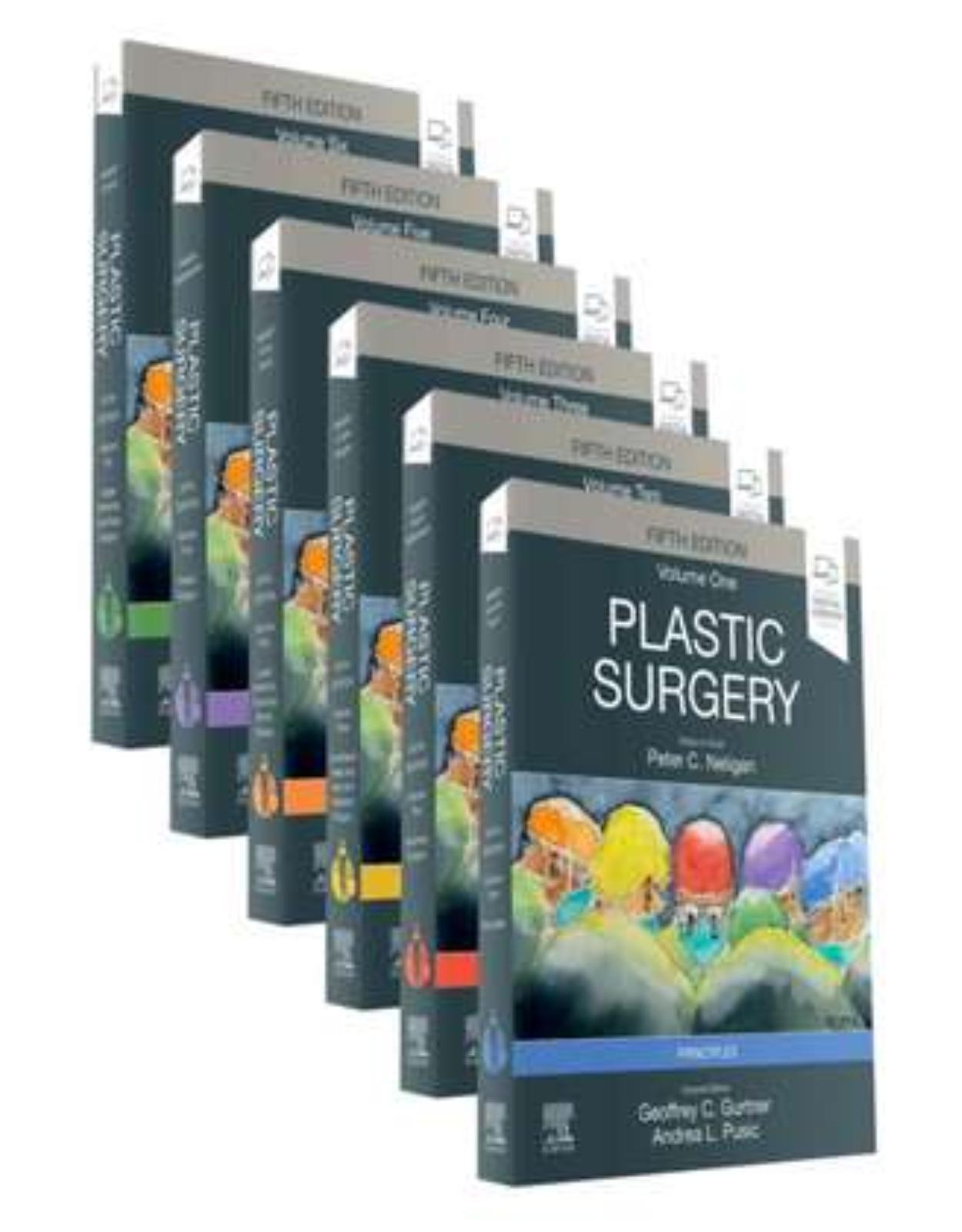
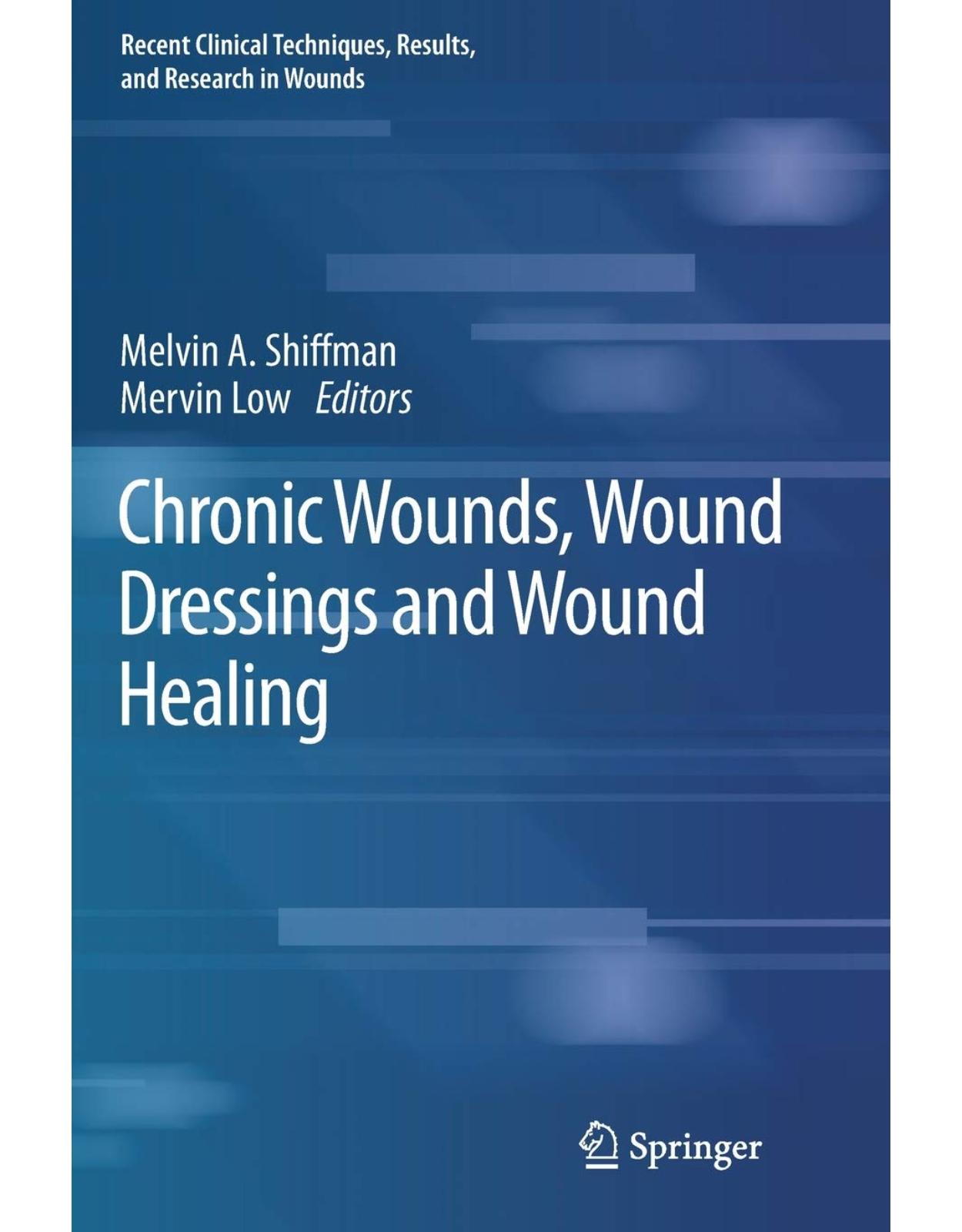
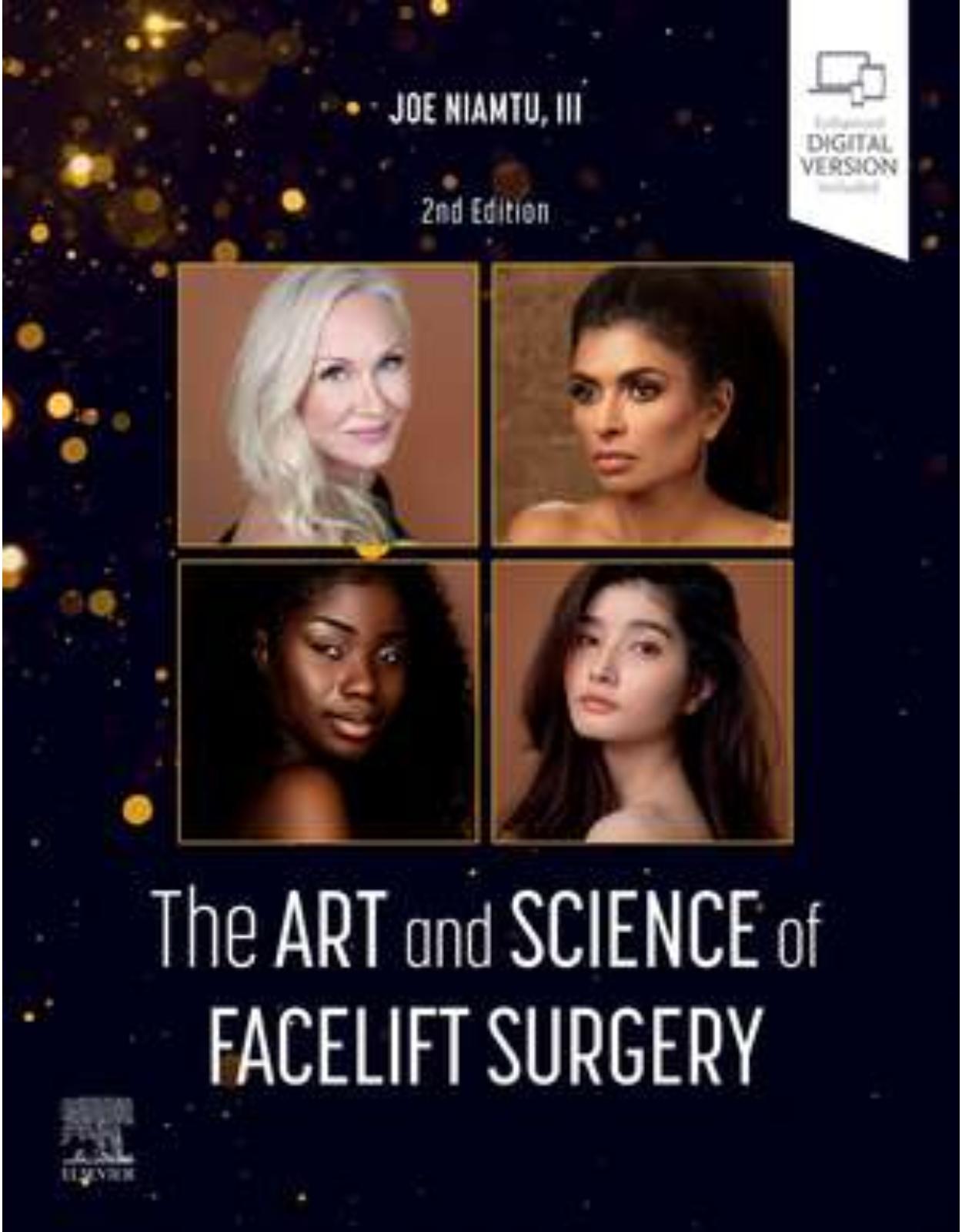
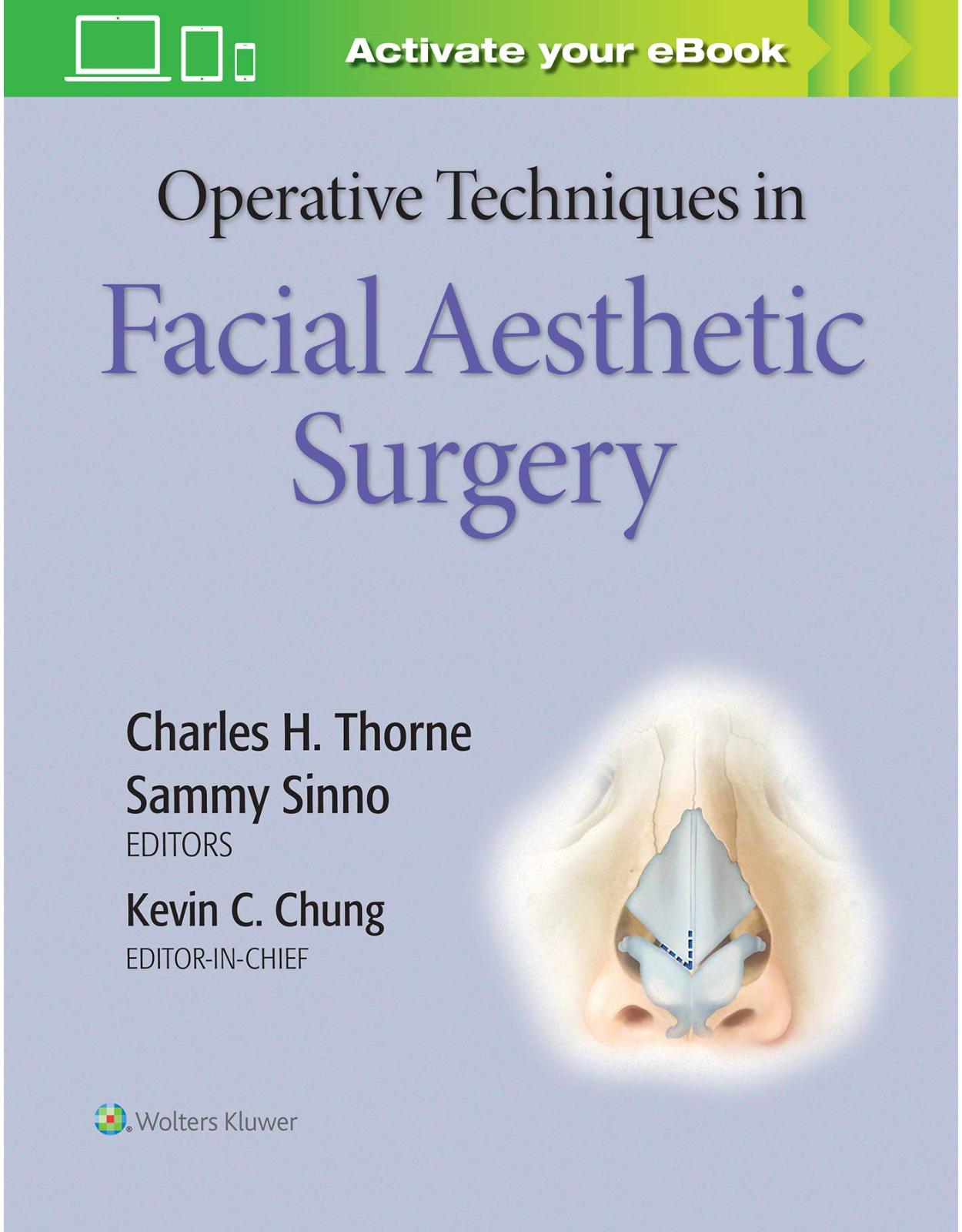
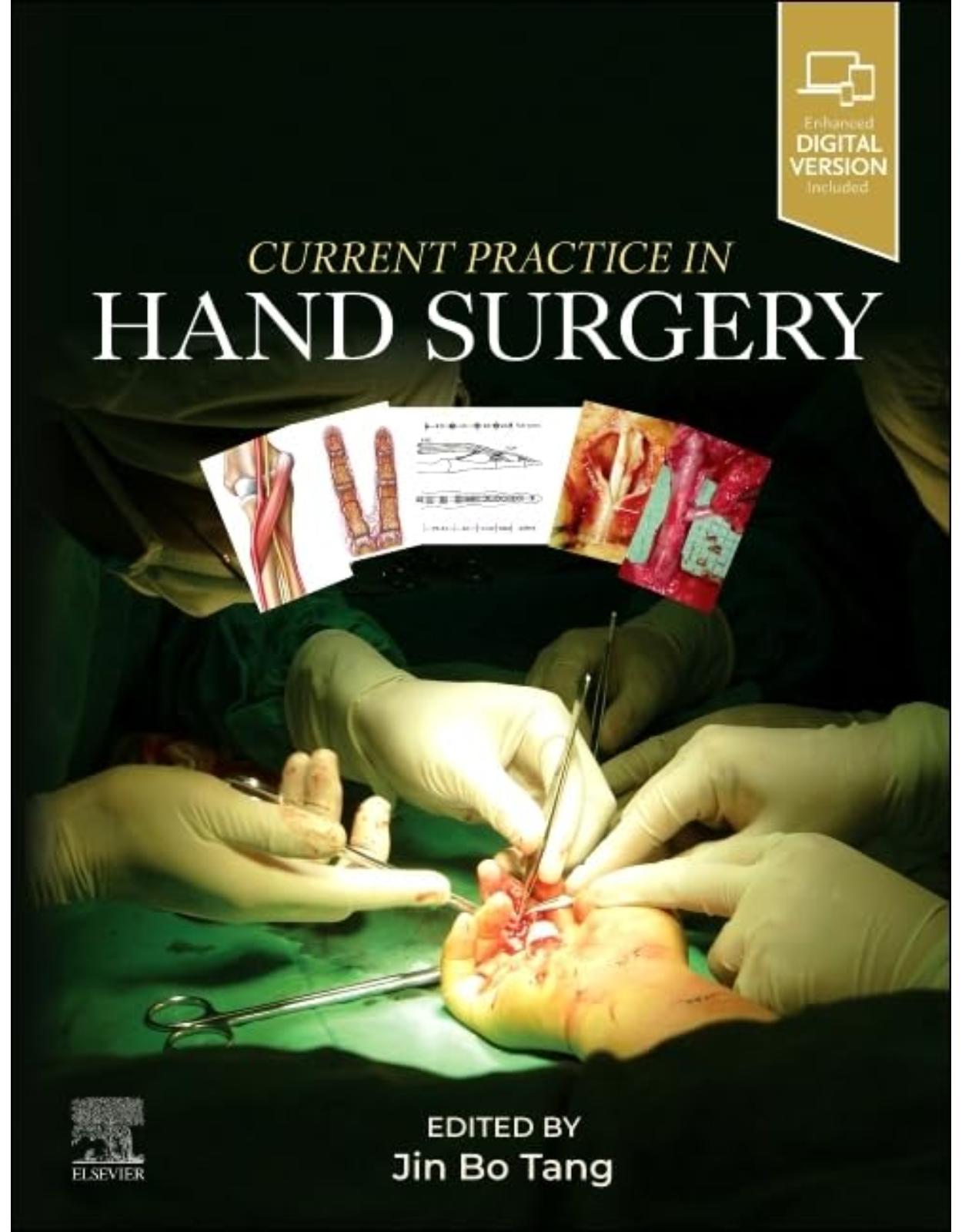
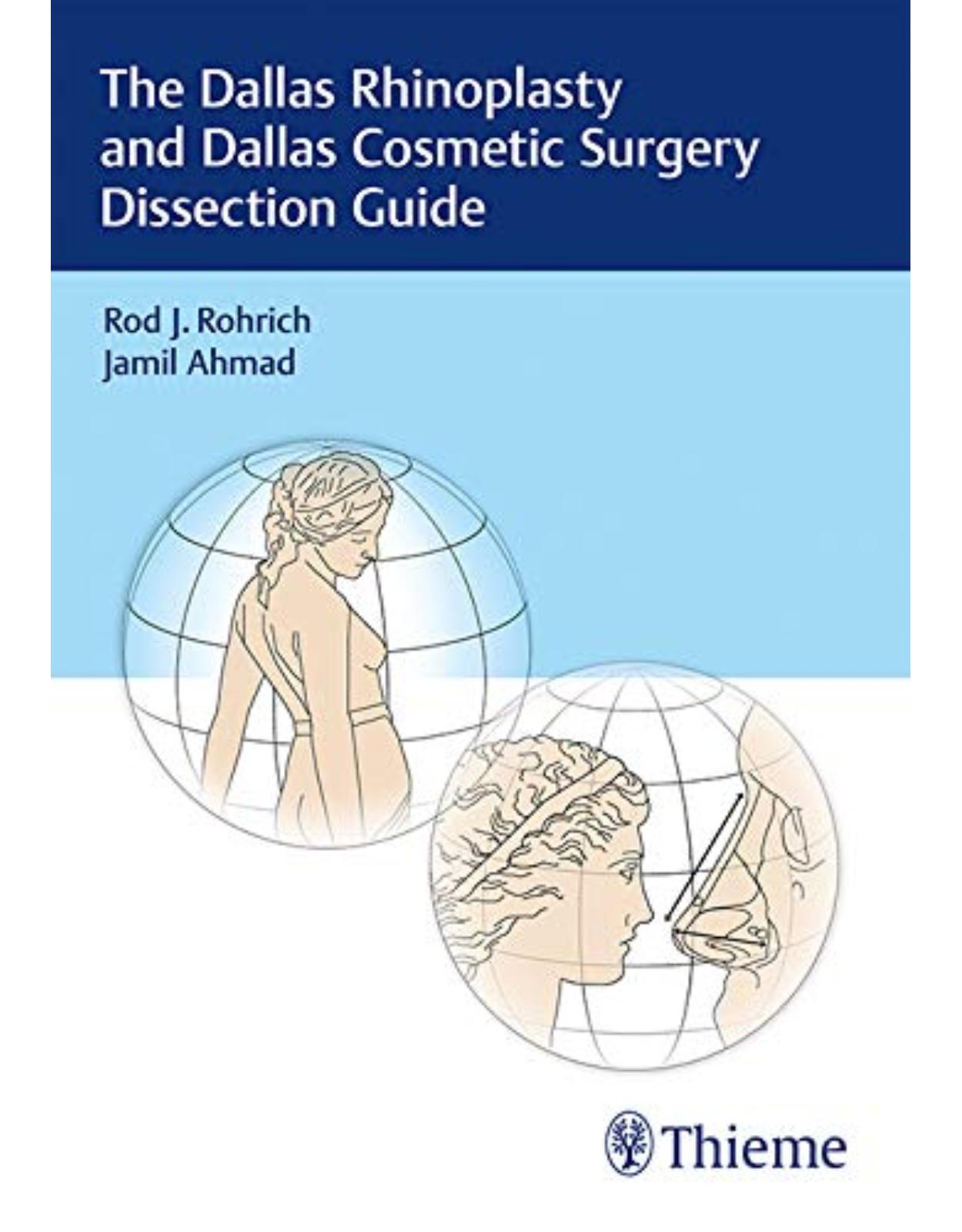
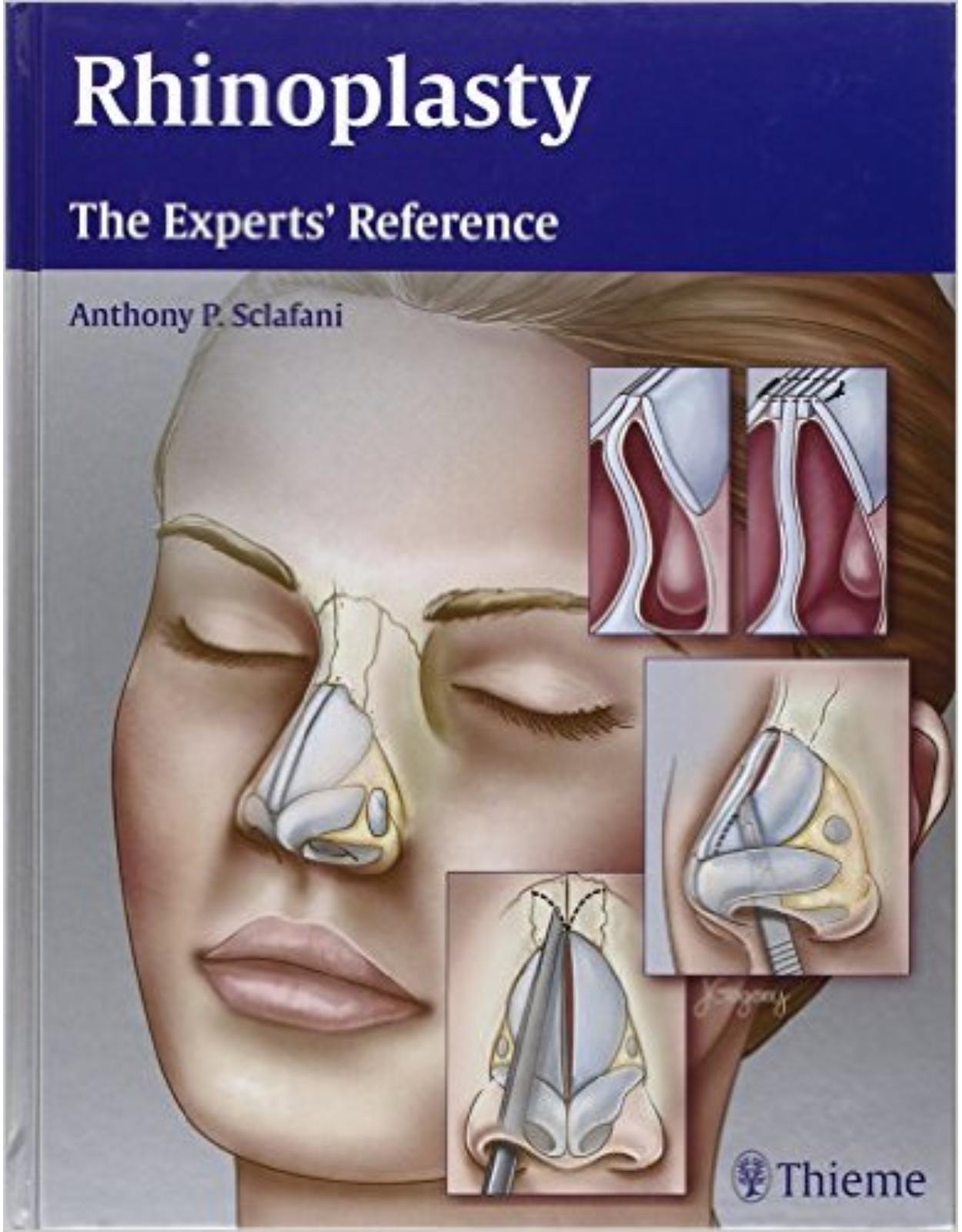
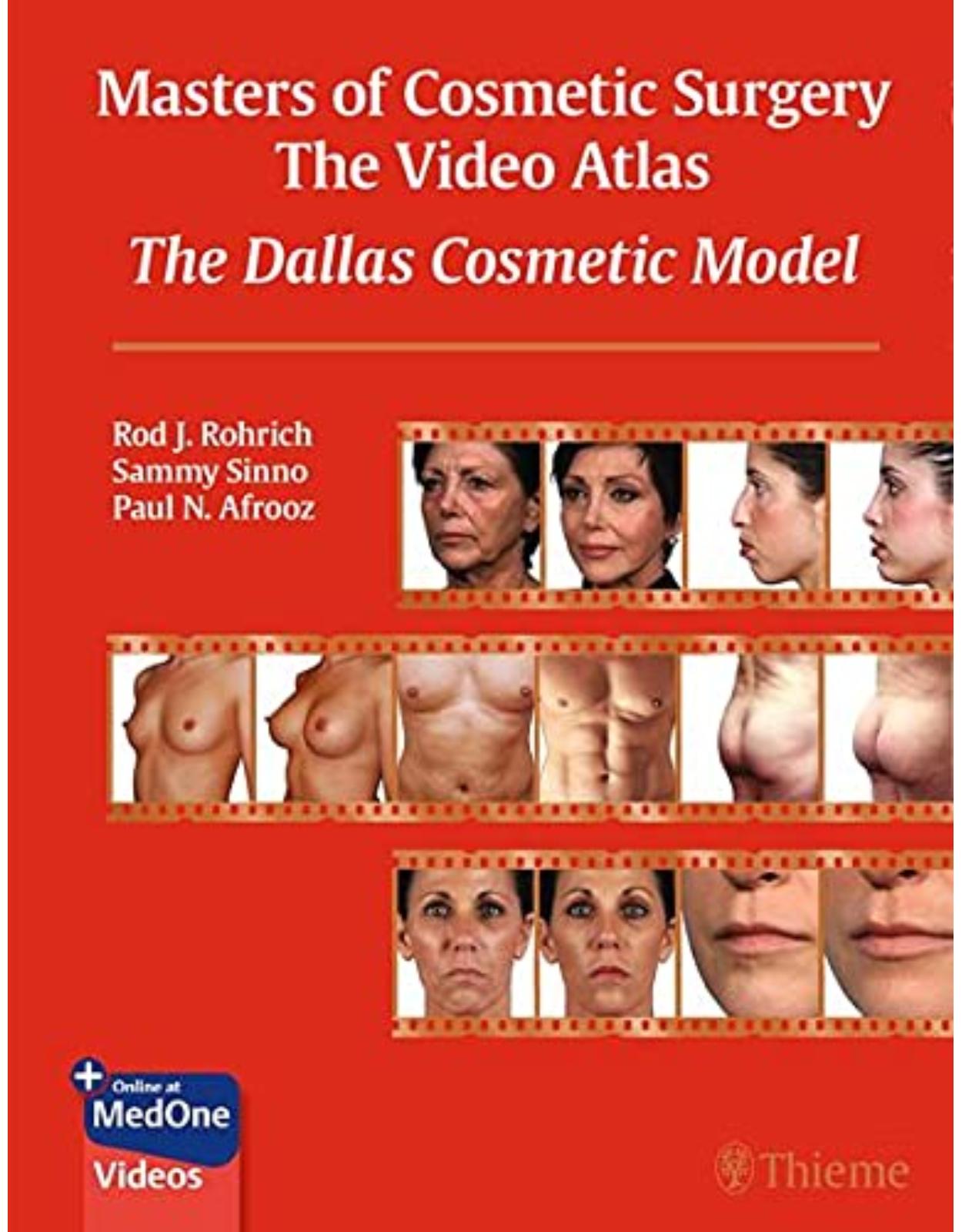
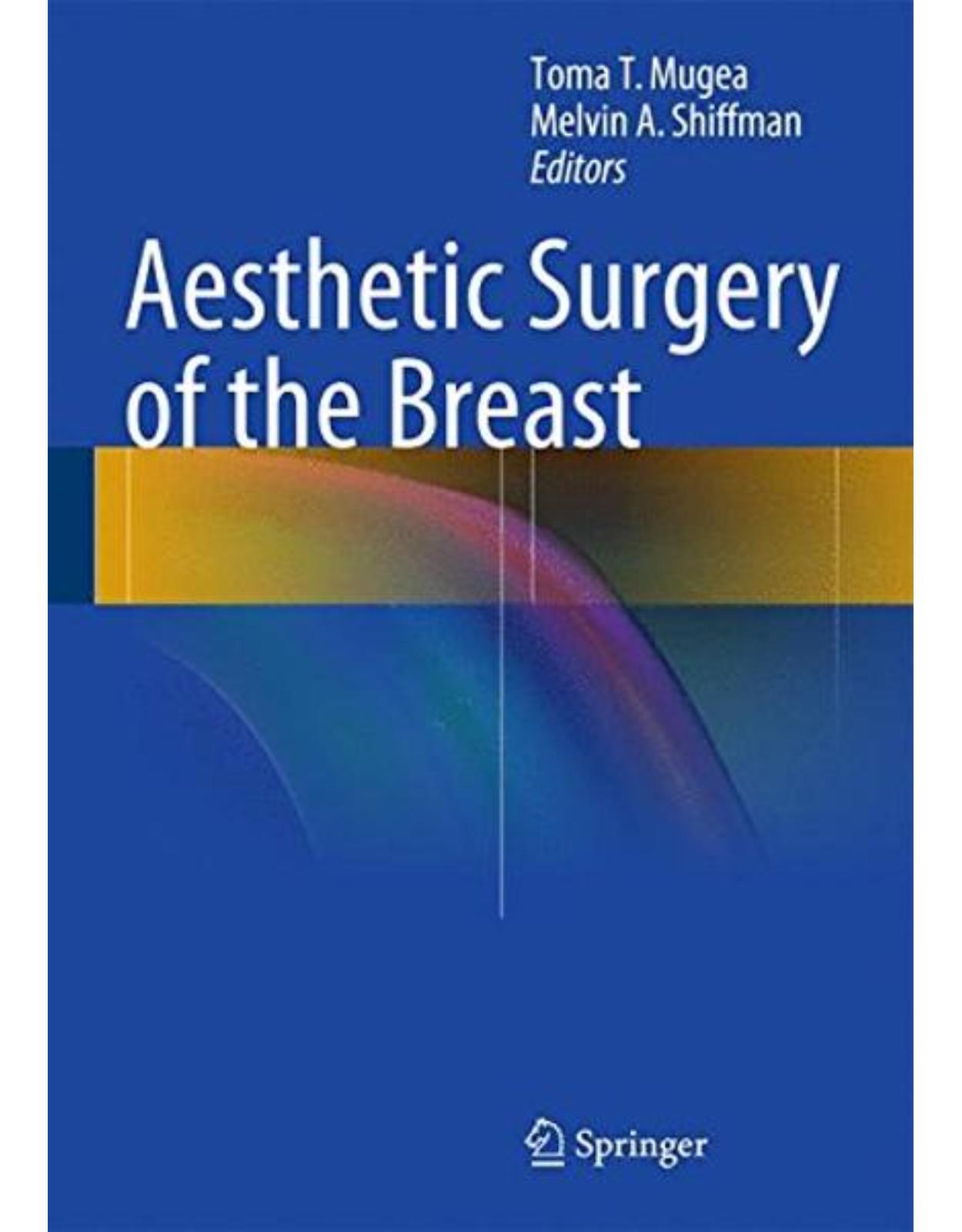

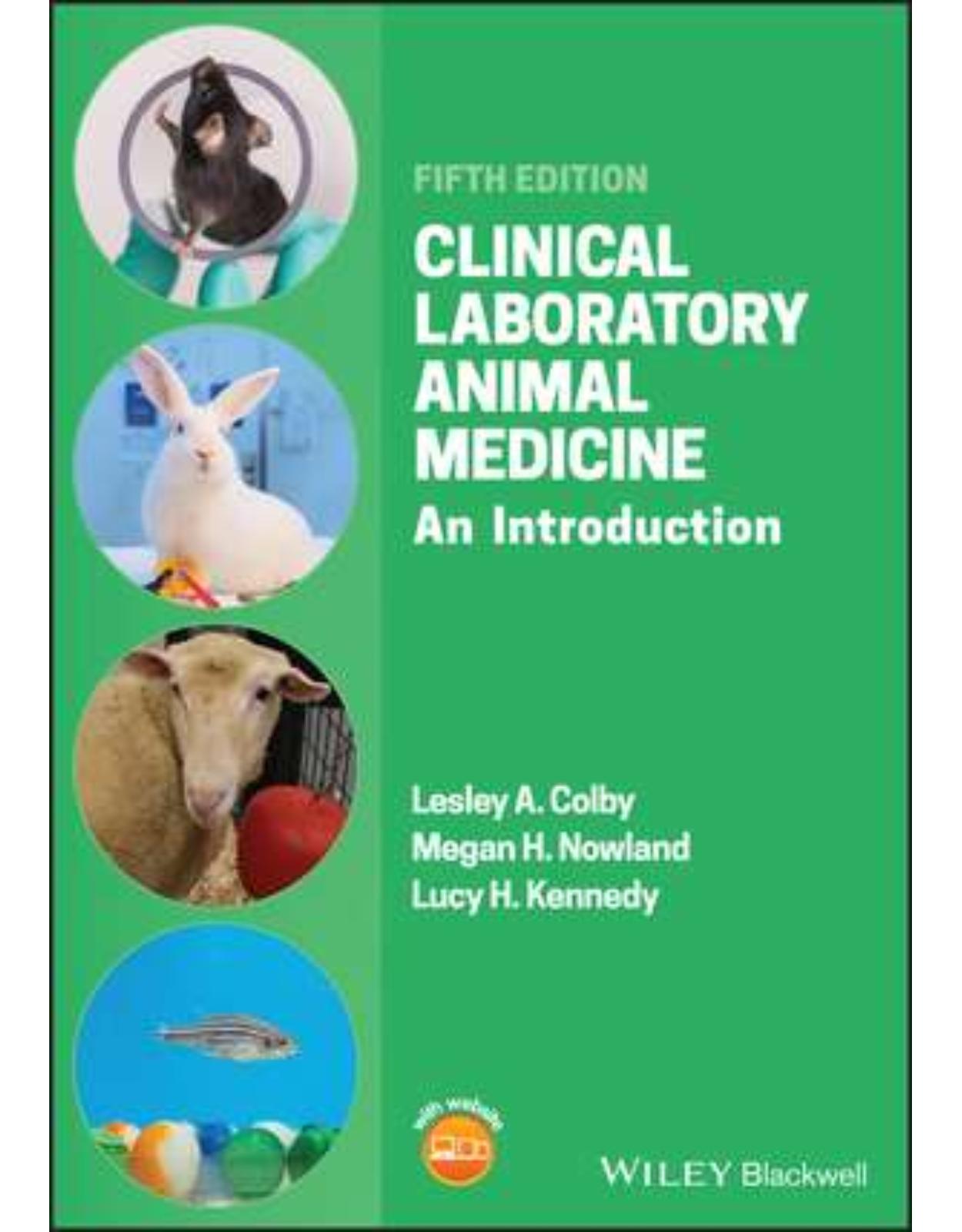



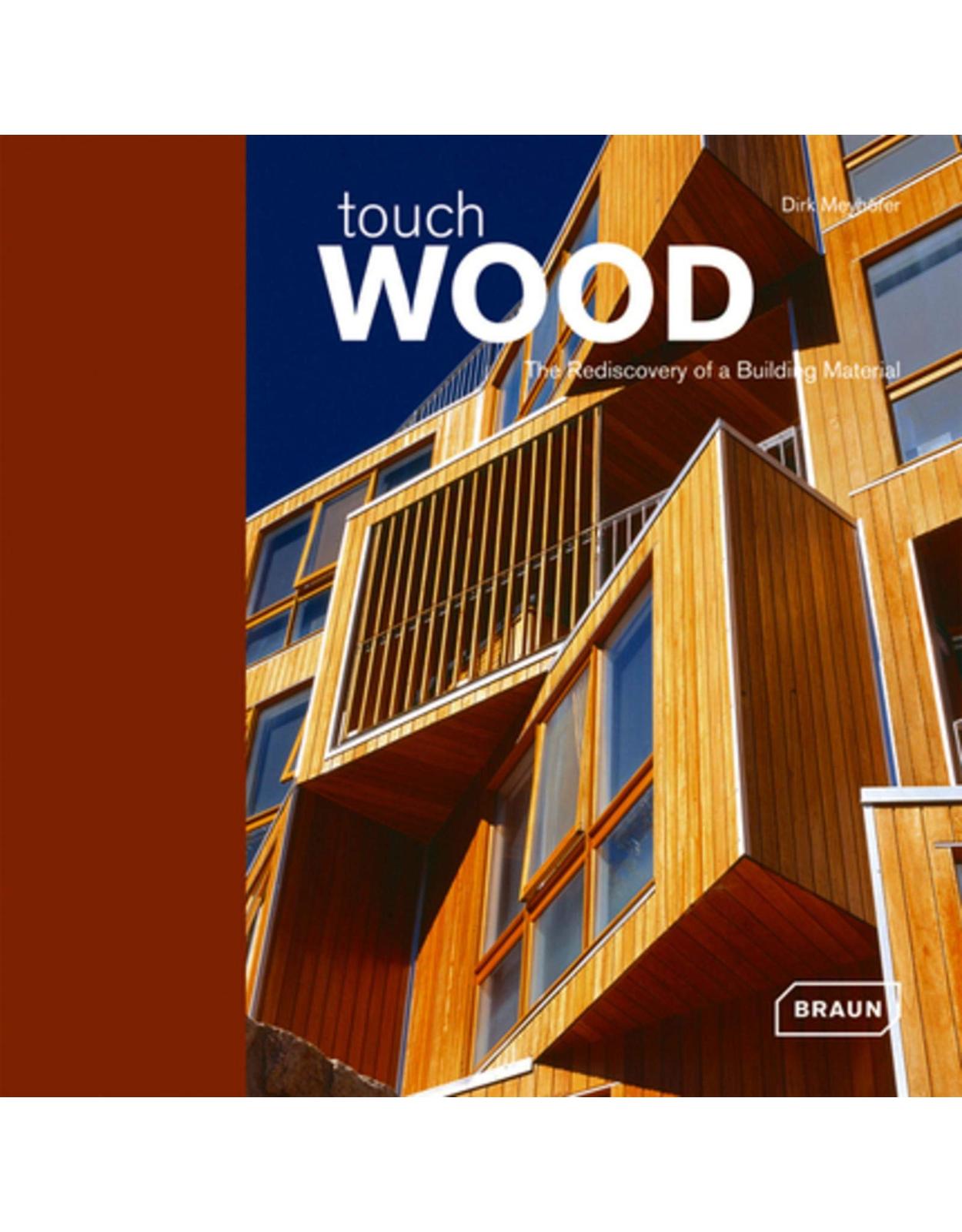


Clientii ebookshop.ro nu au adaugat inca opinii pentru acest produs. Fii primul care adauga o parere, folosind formularul de mai jos.